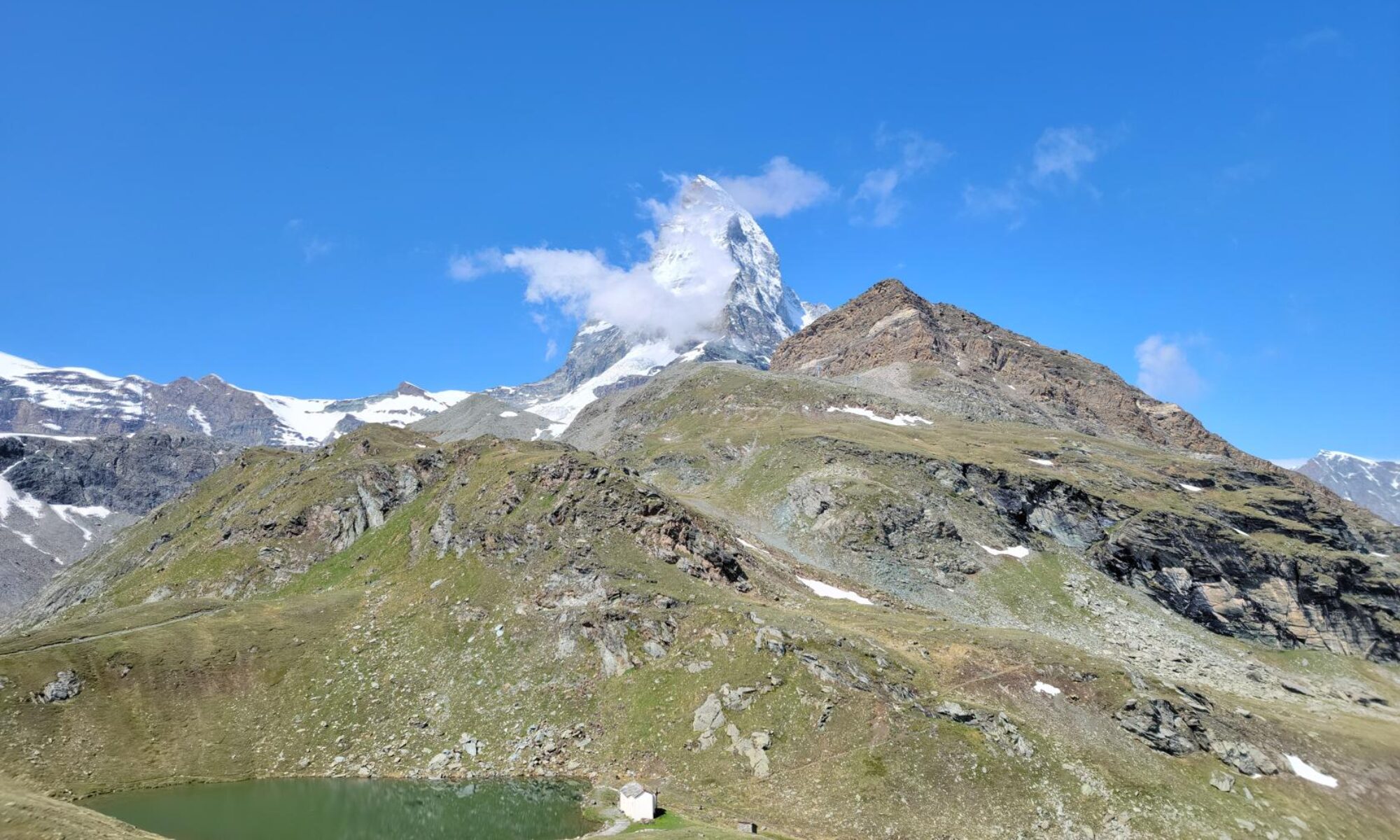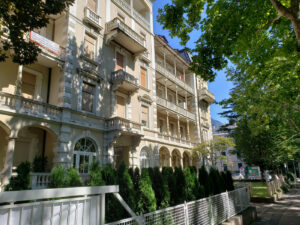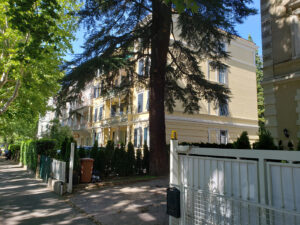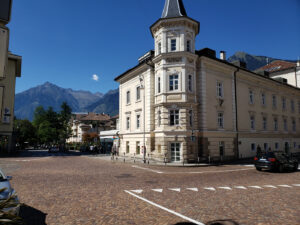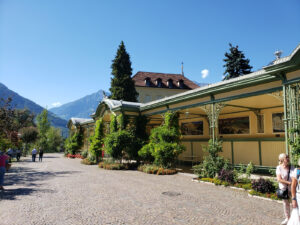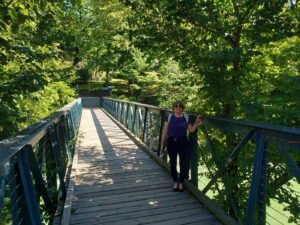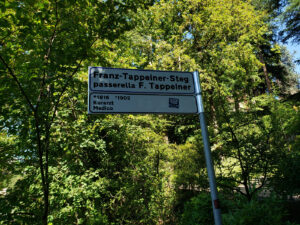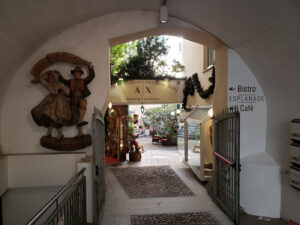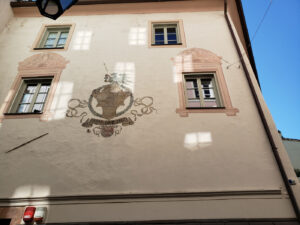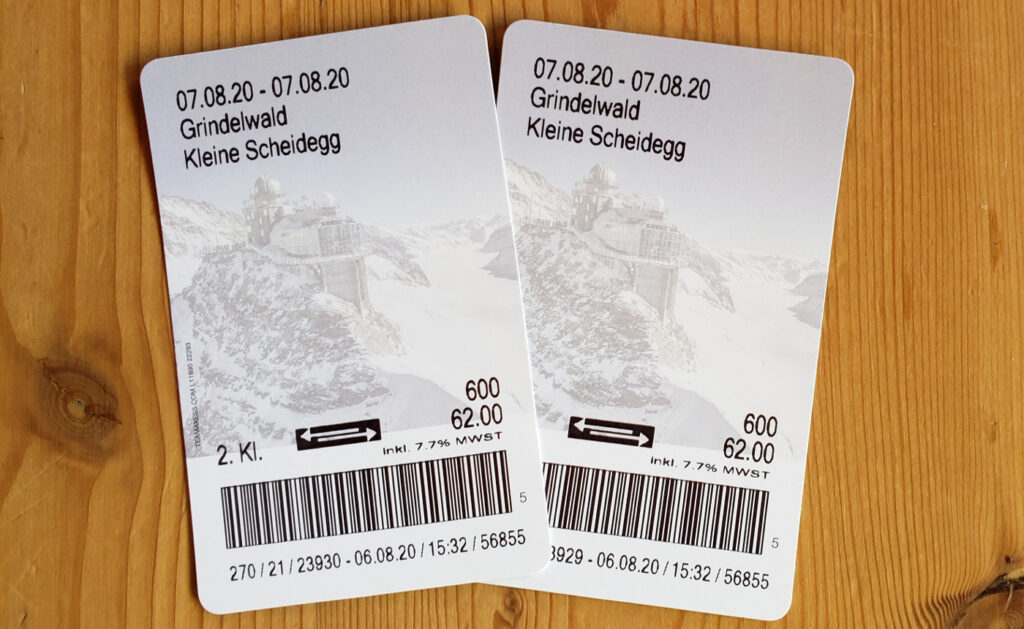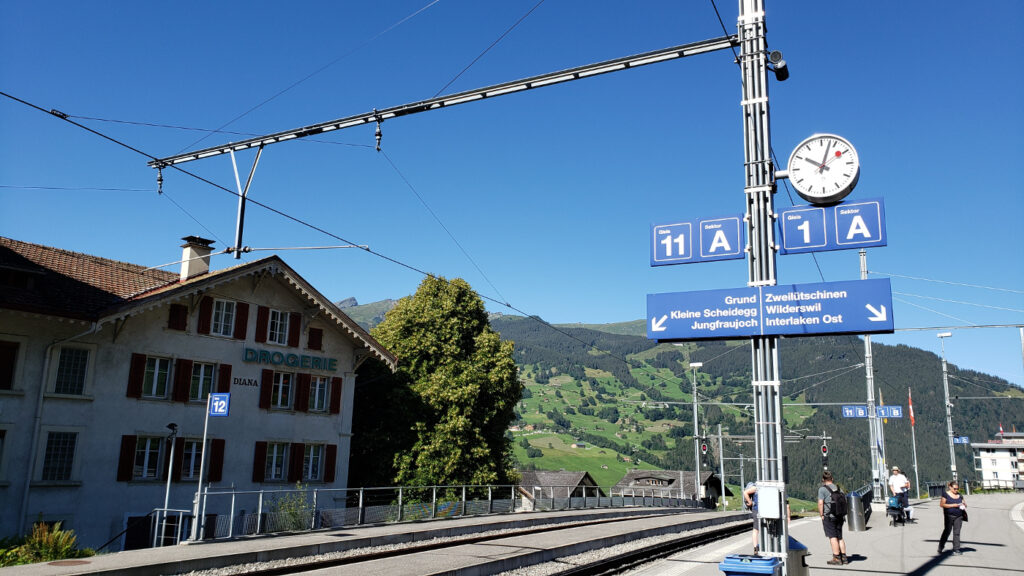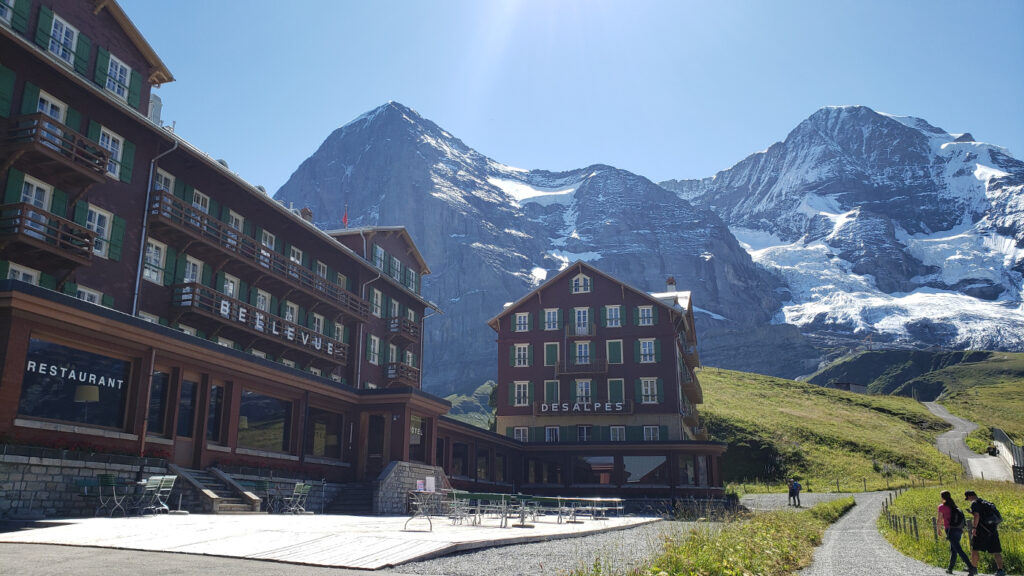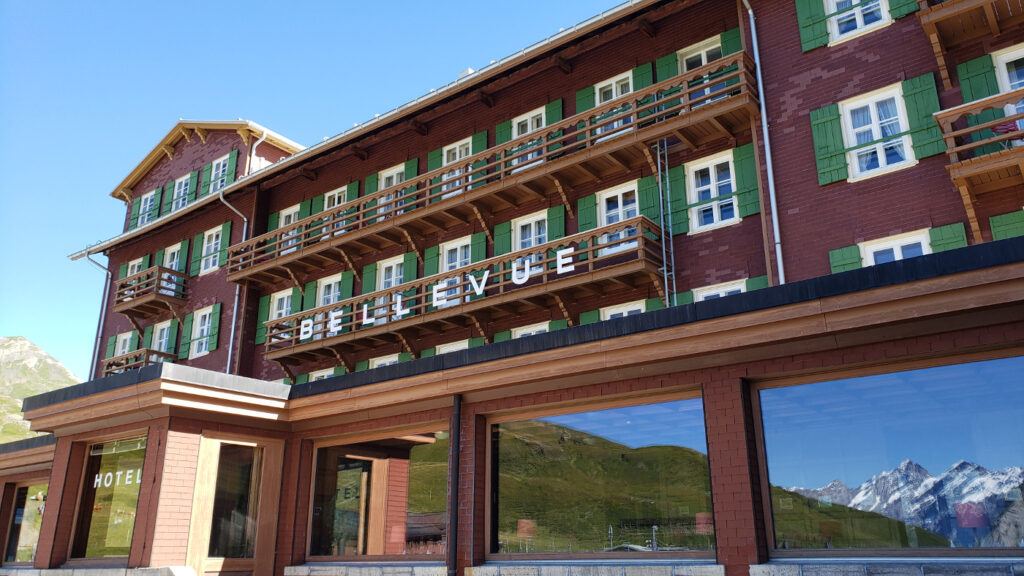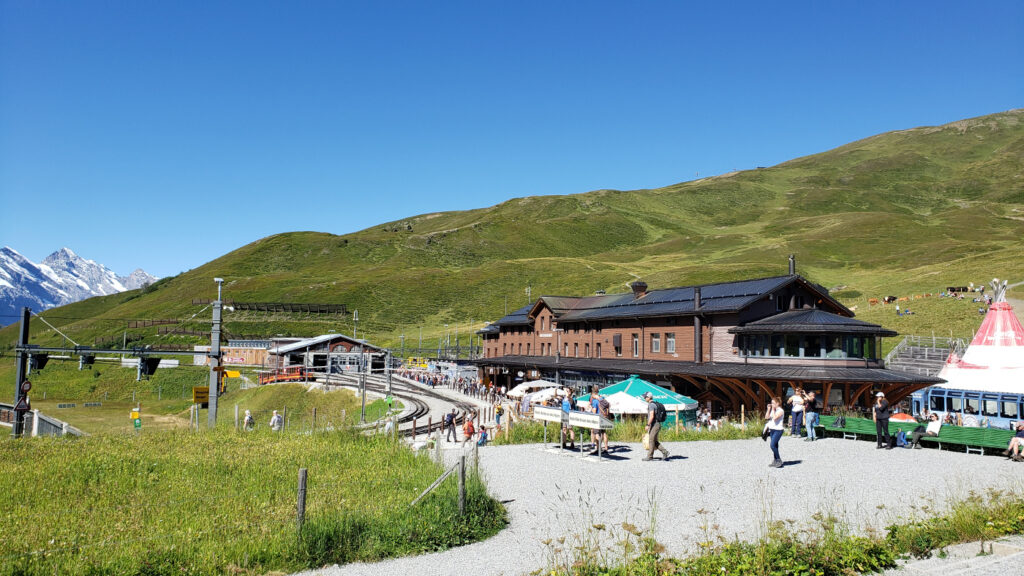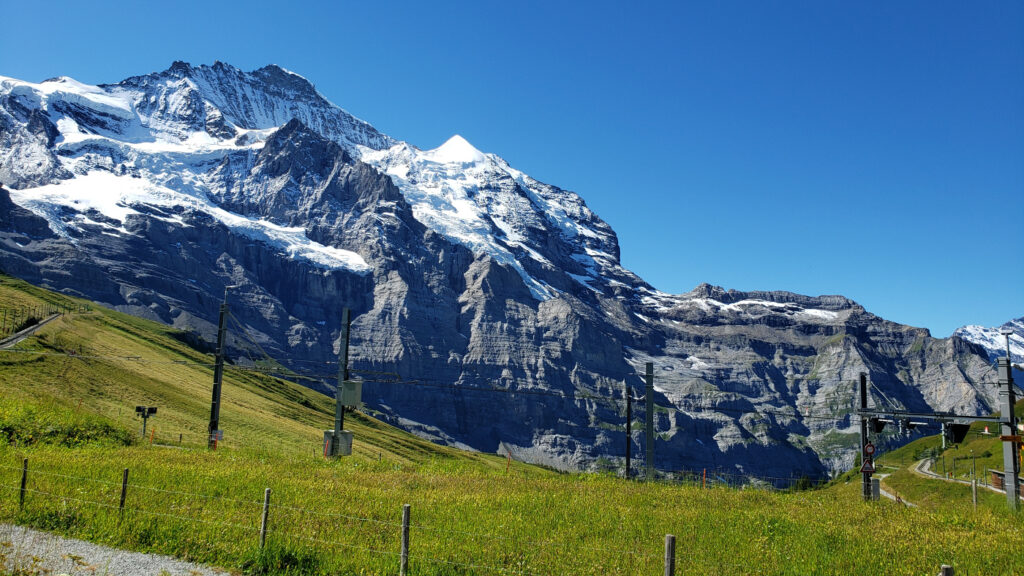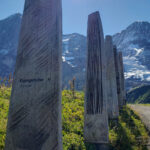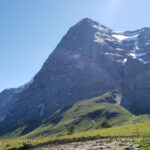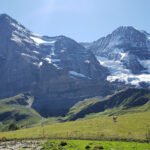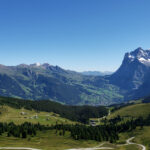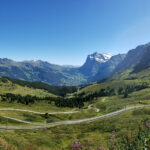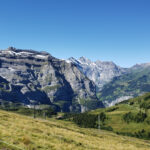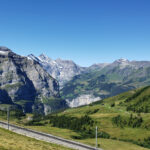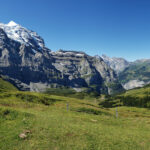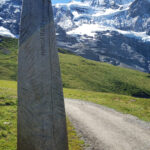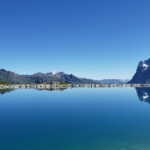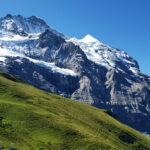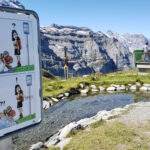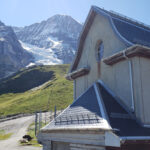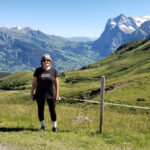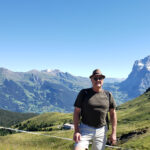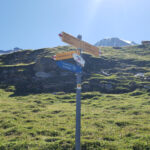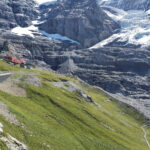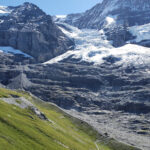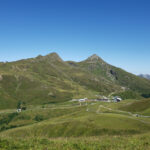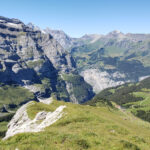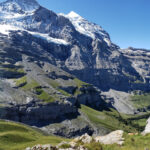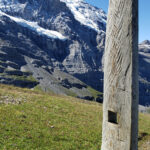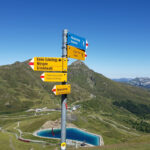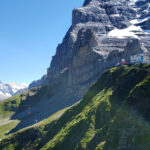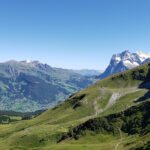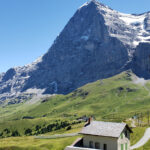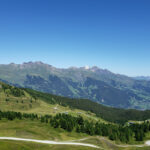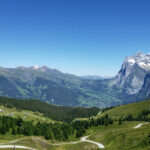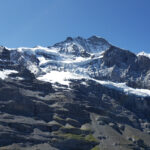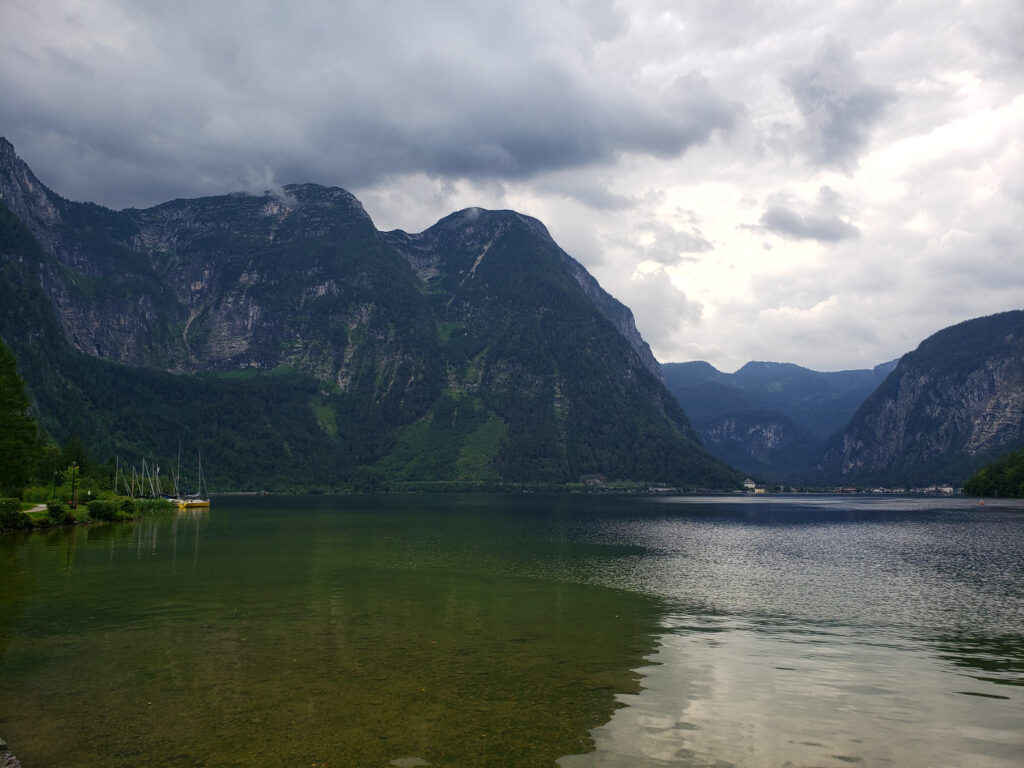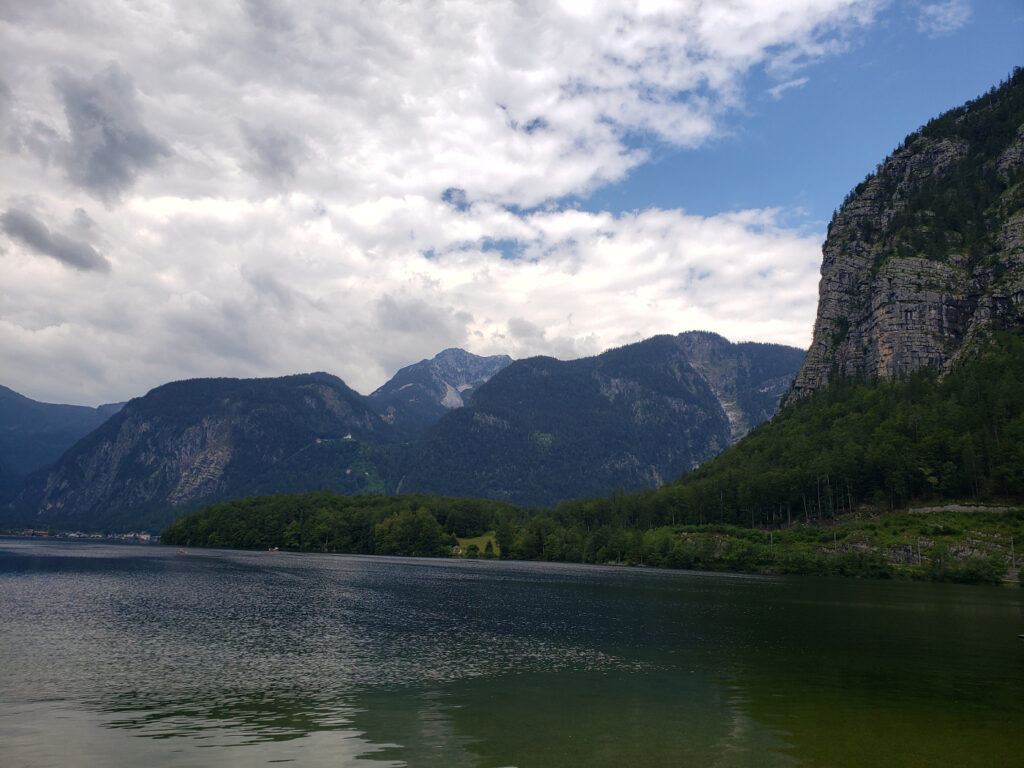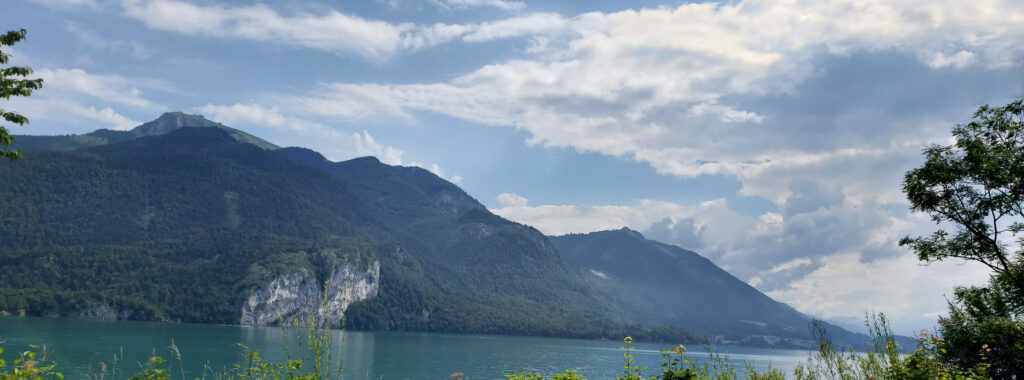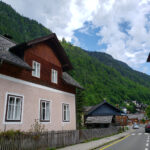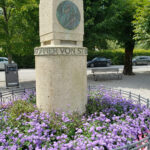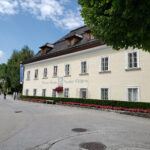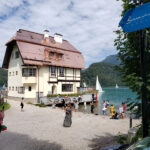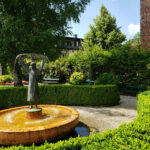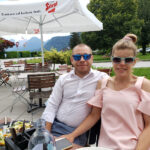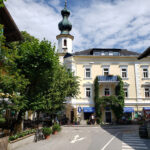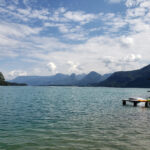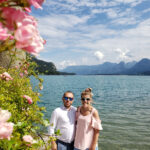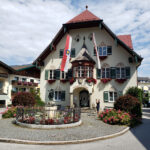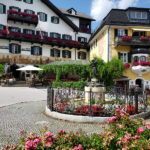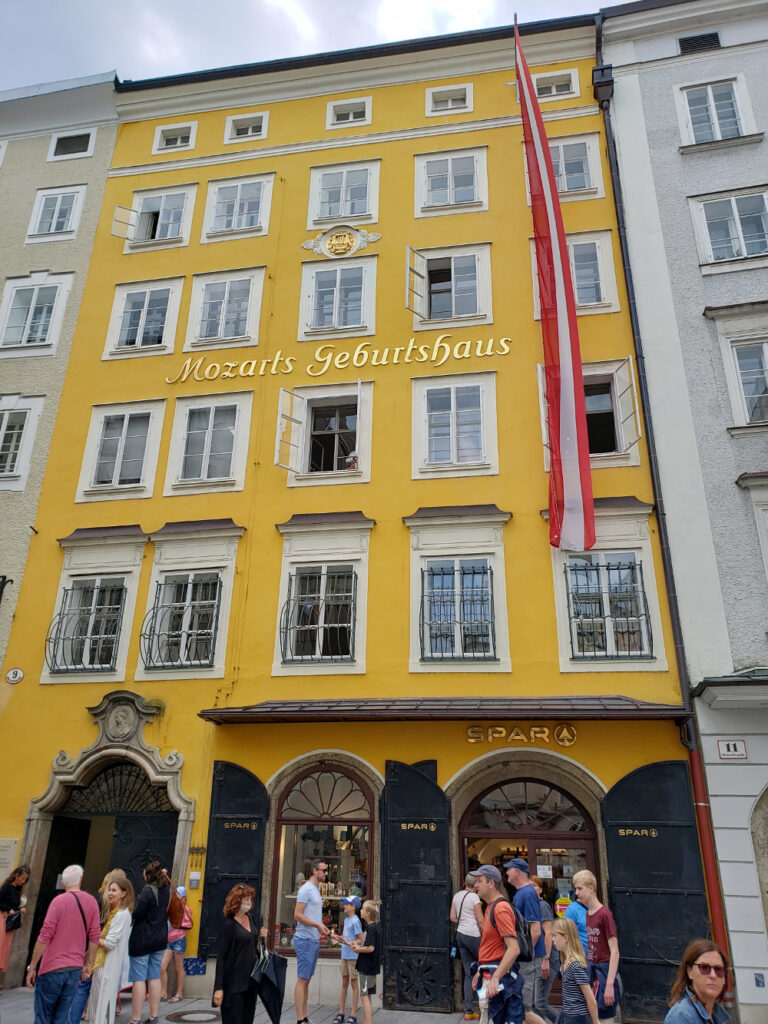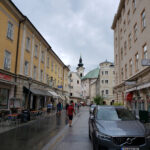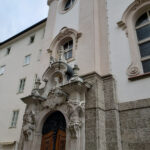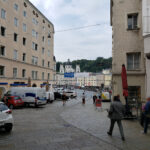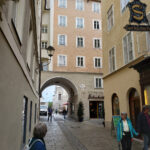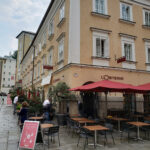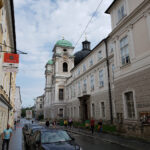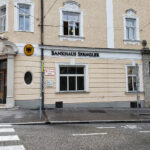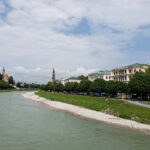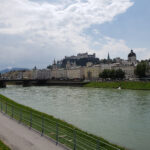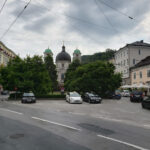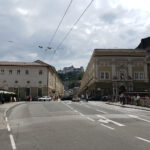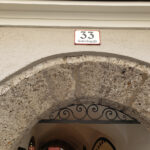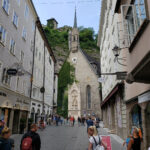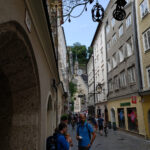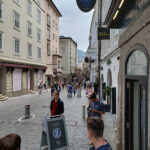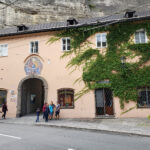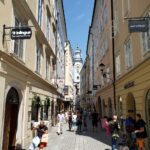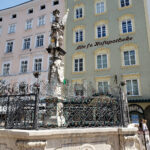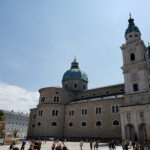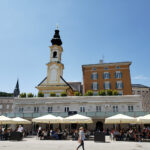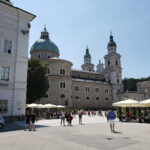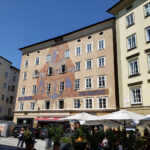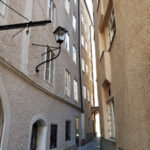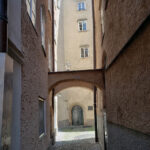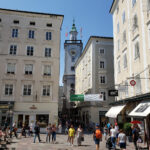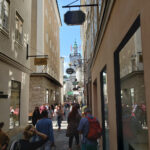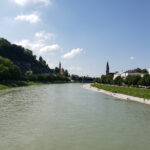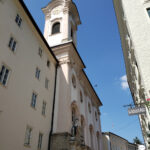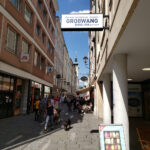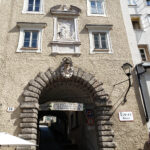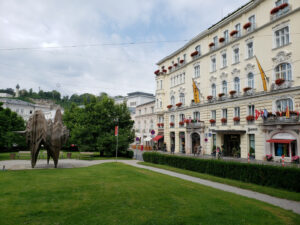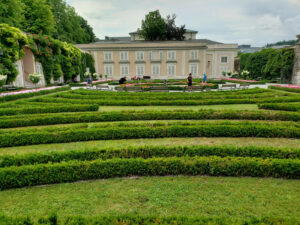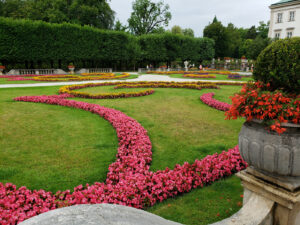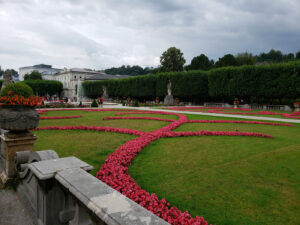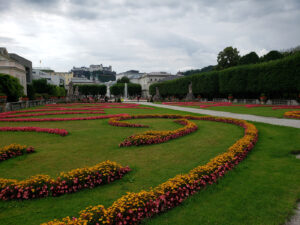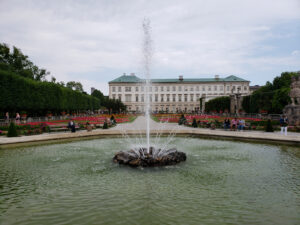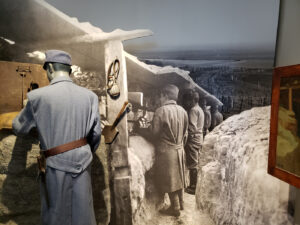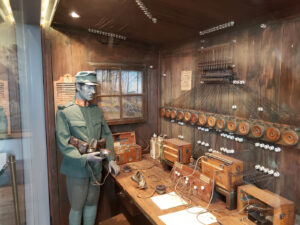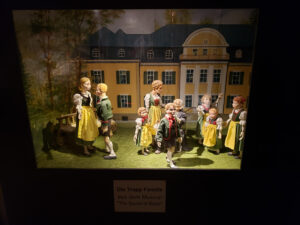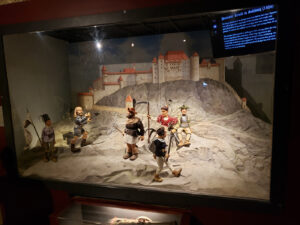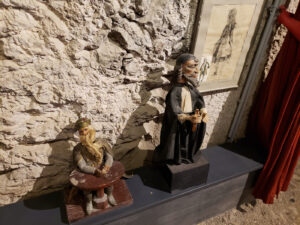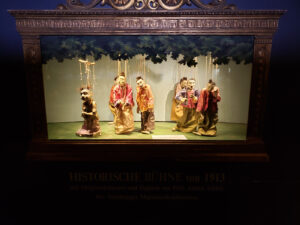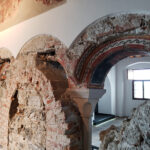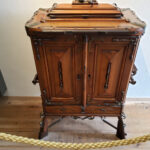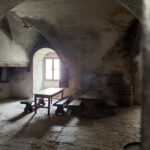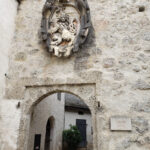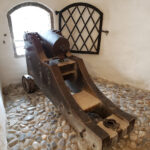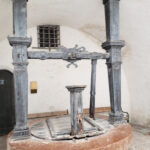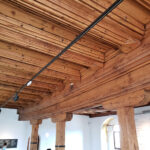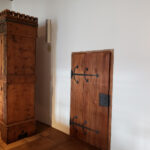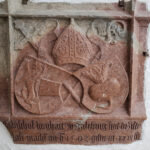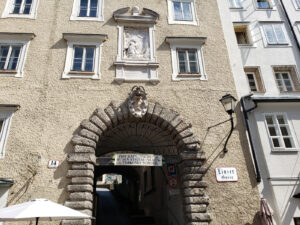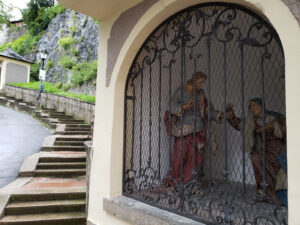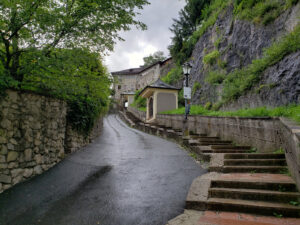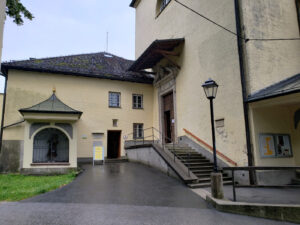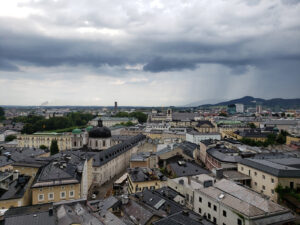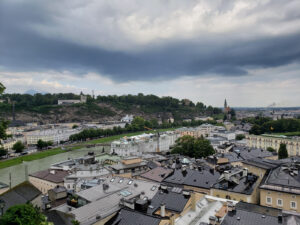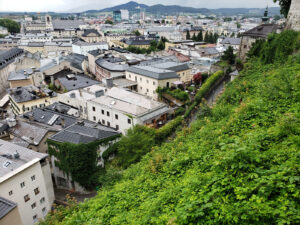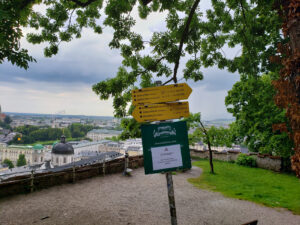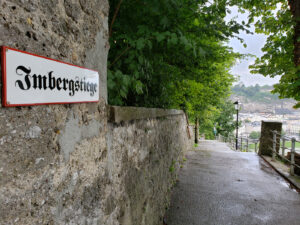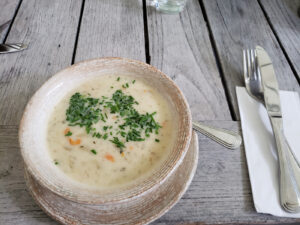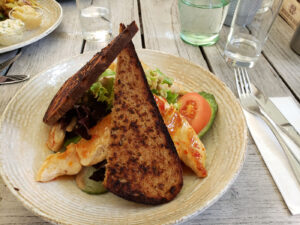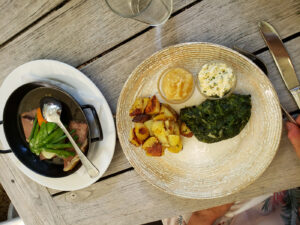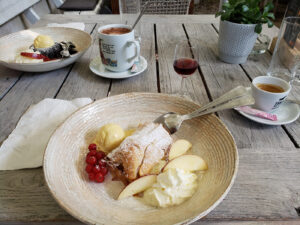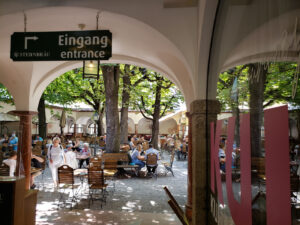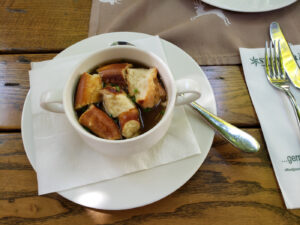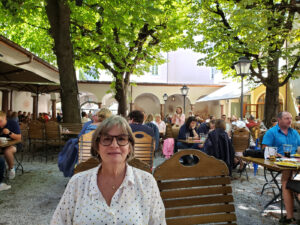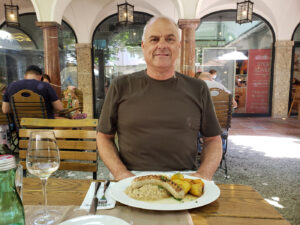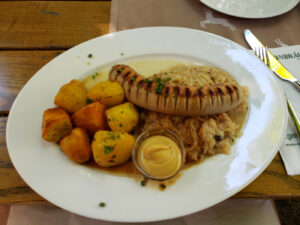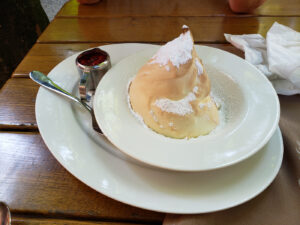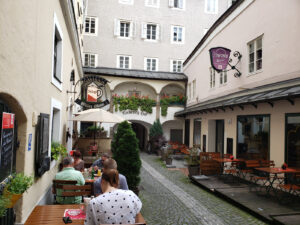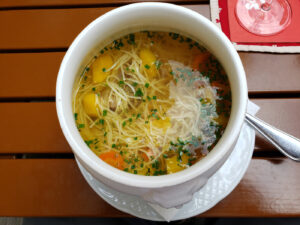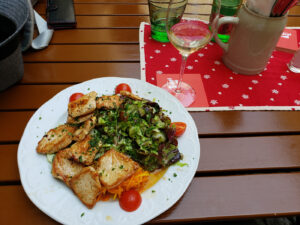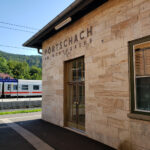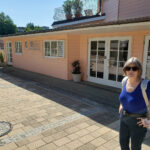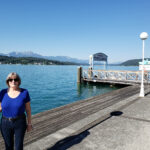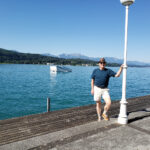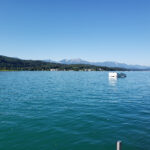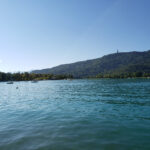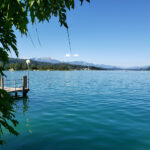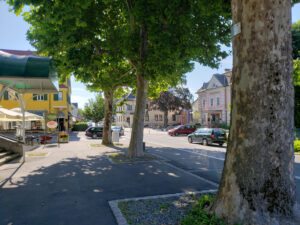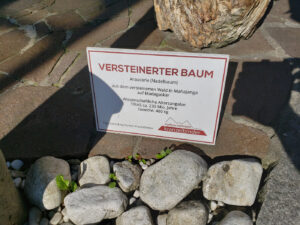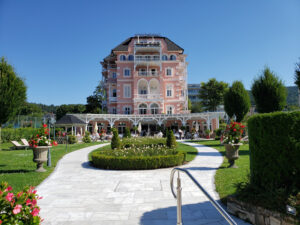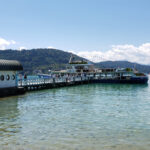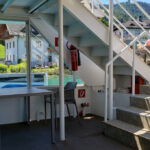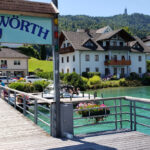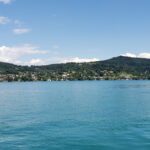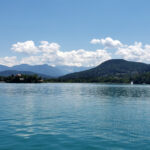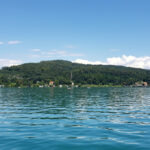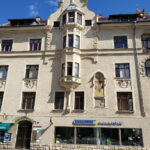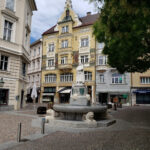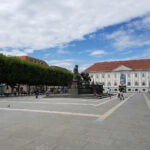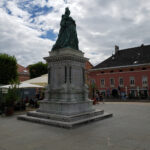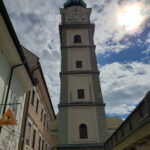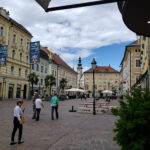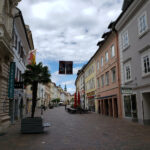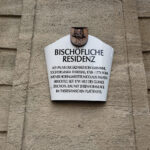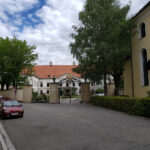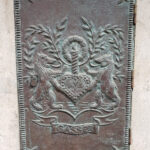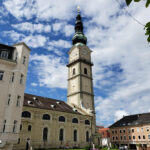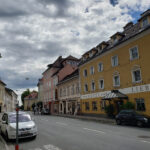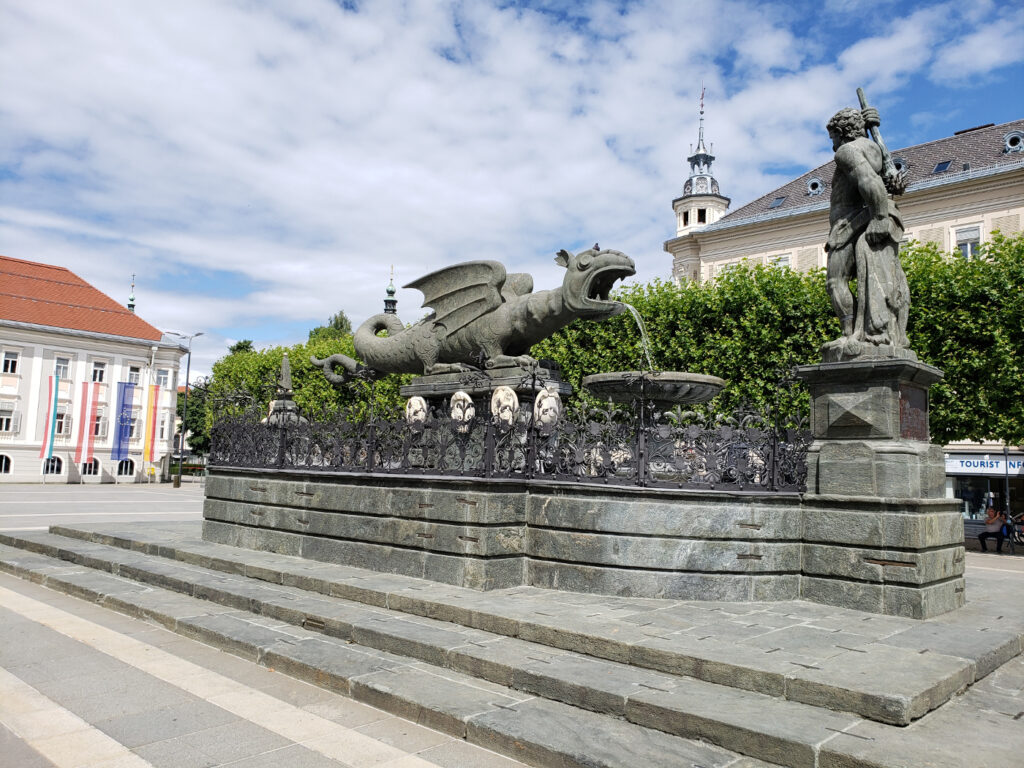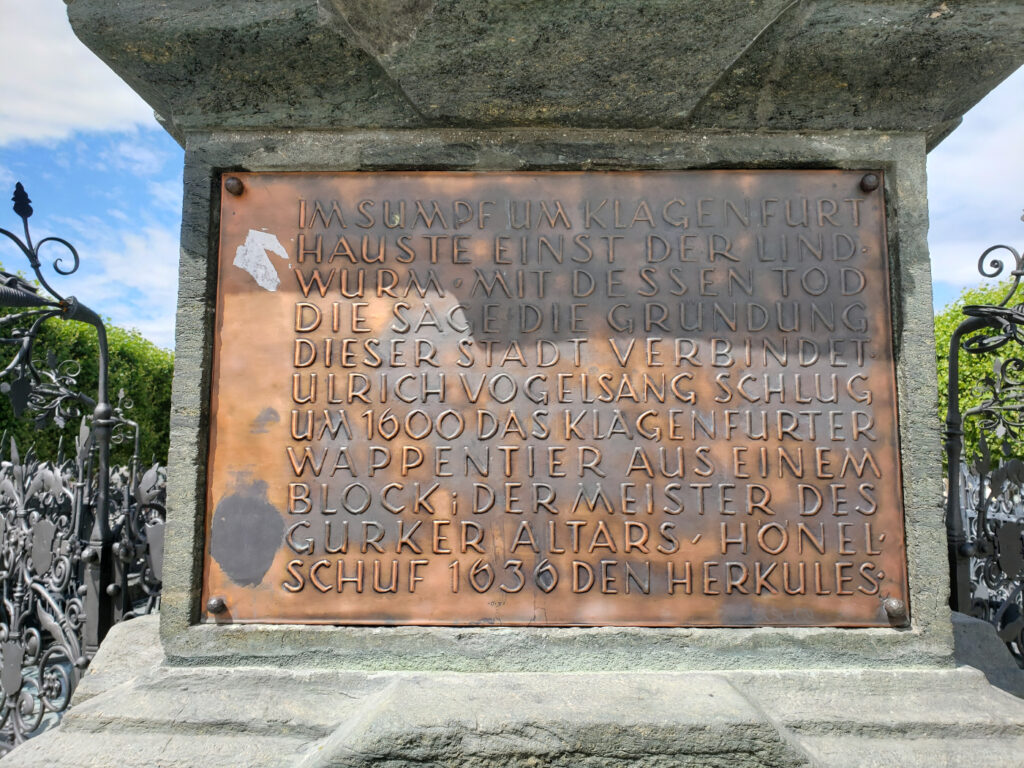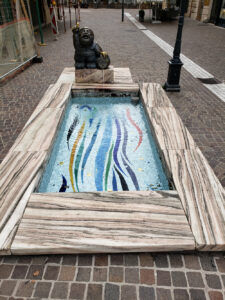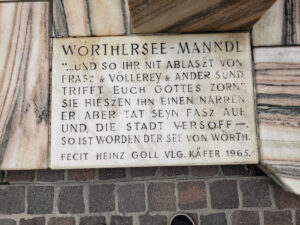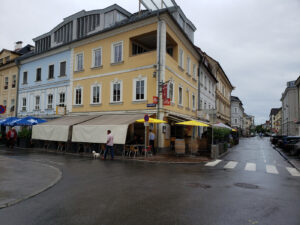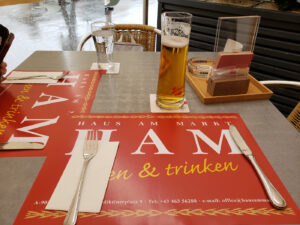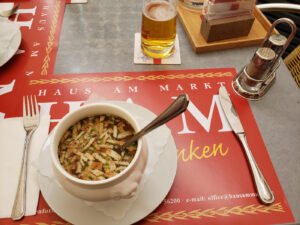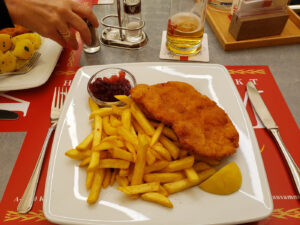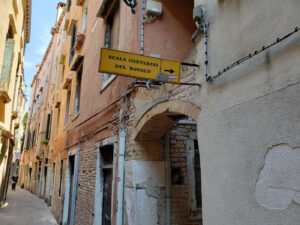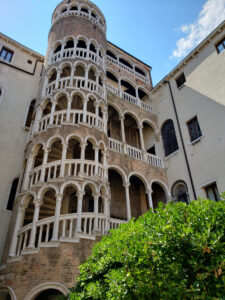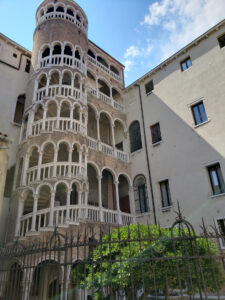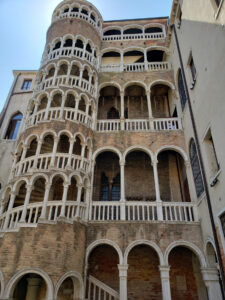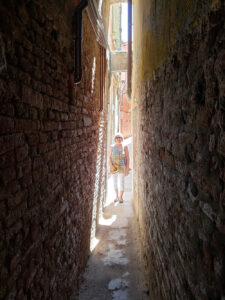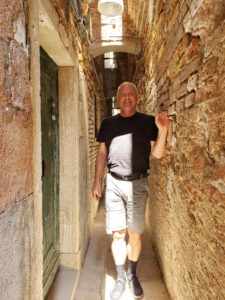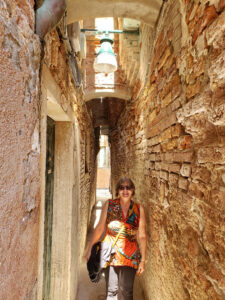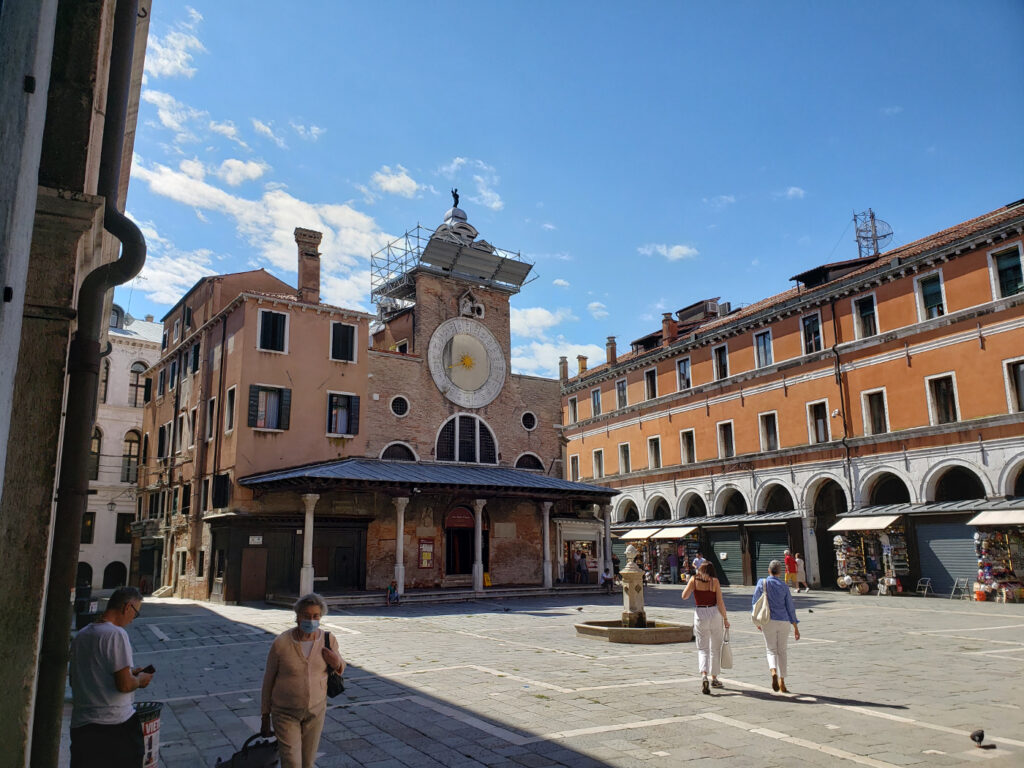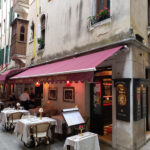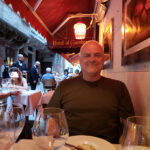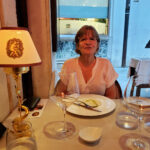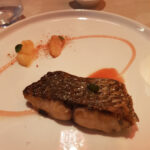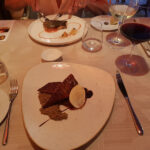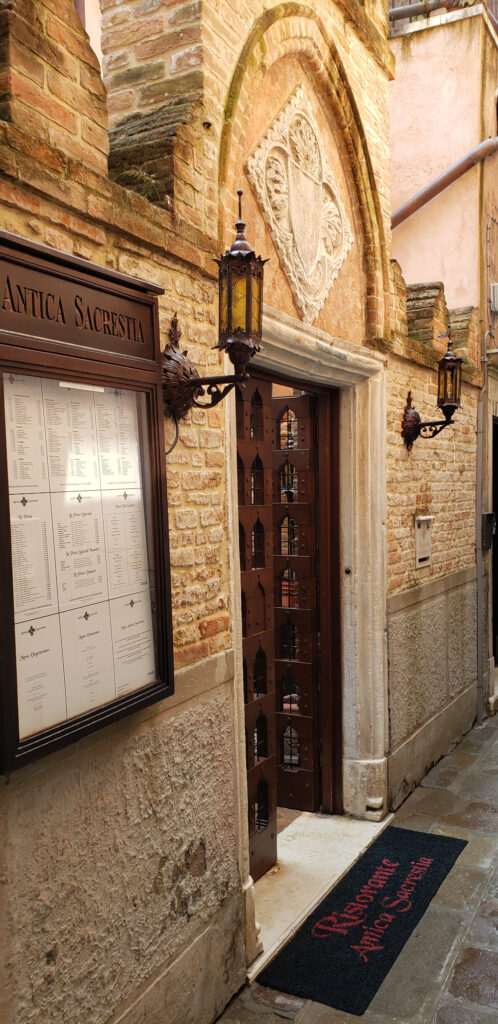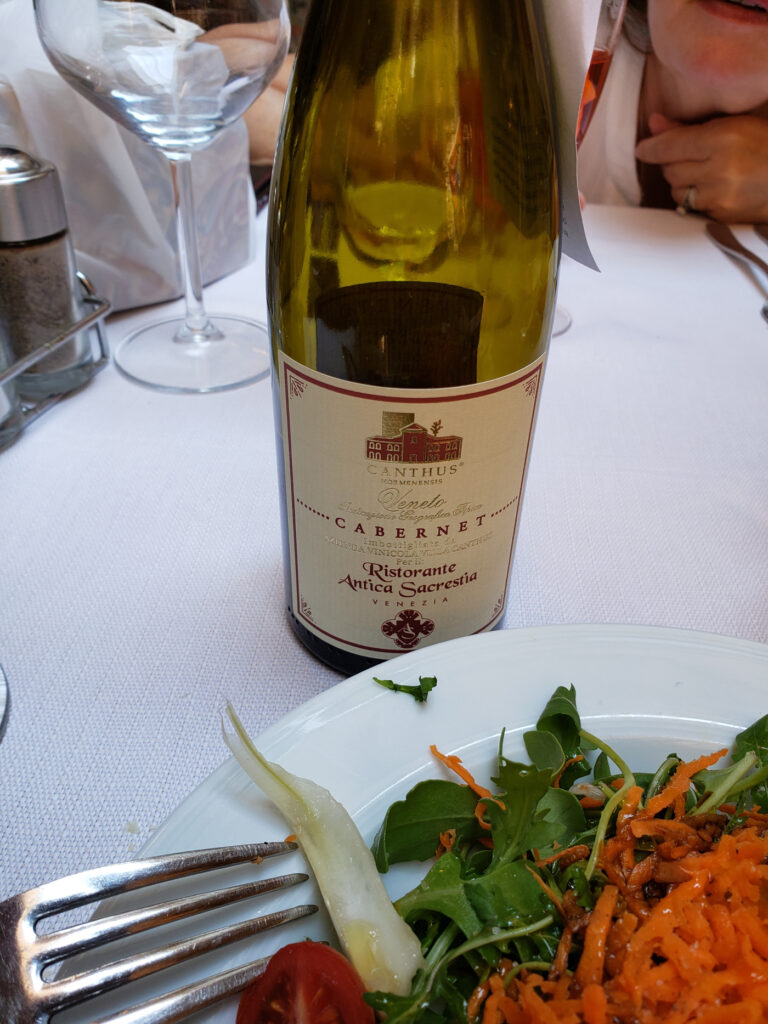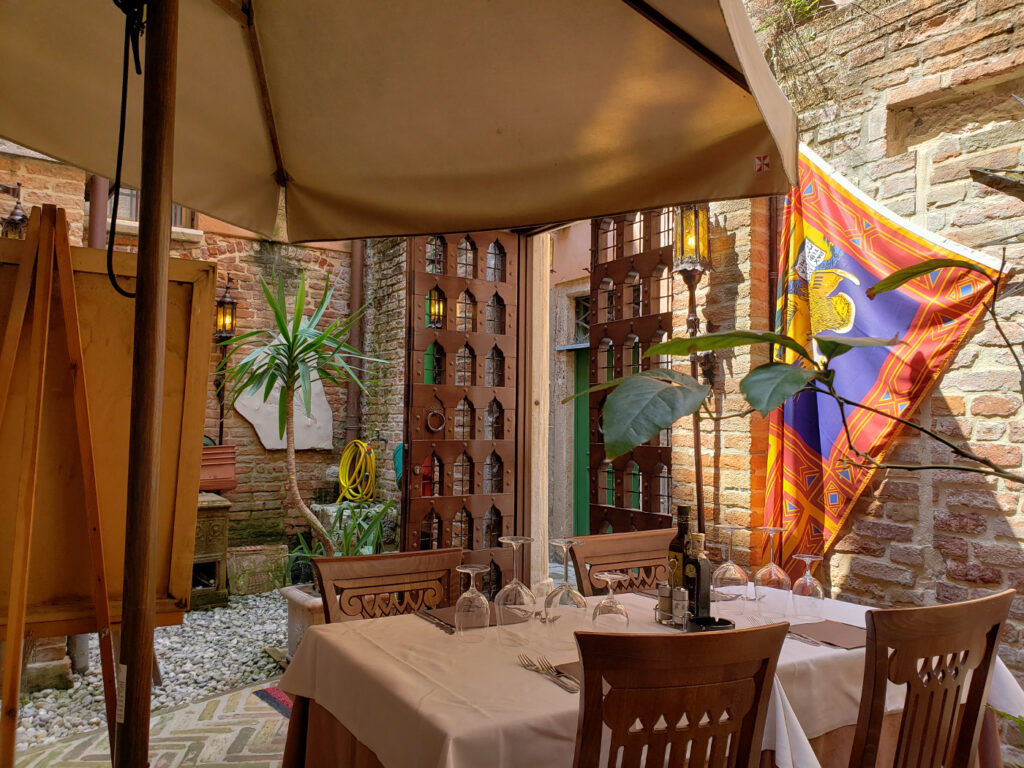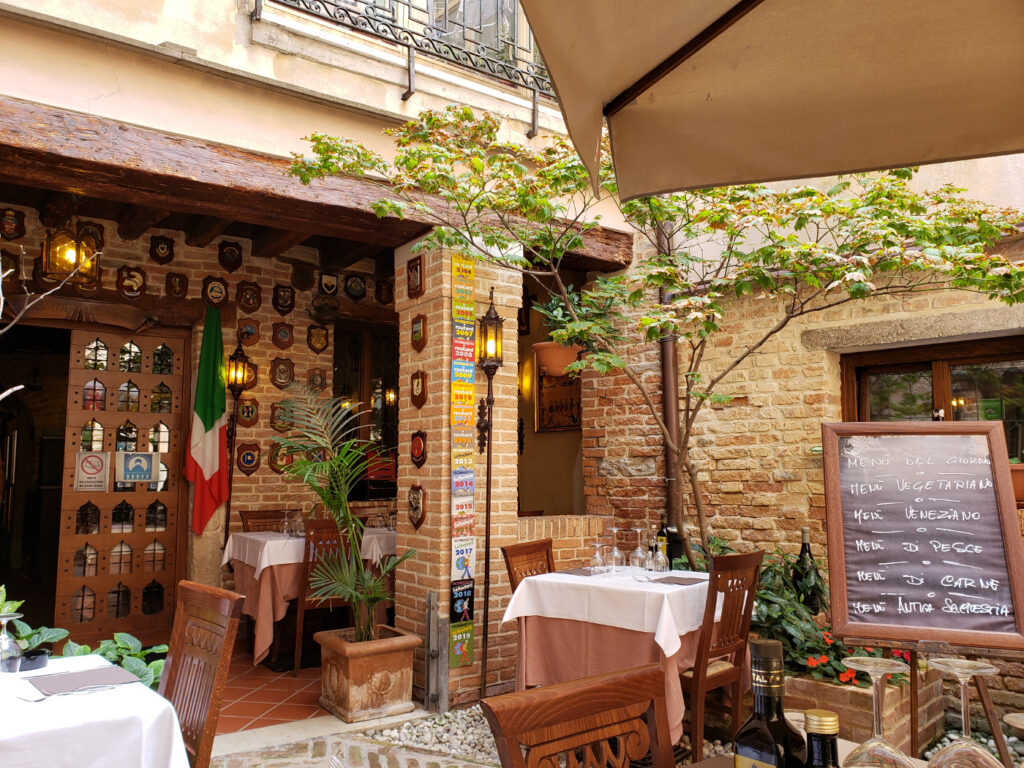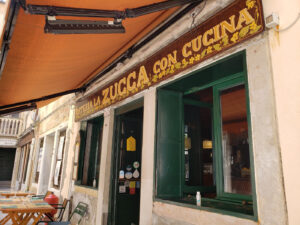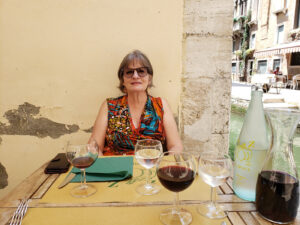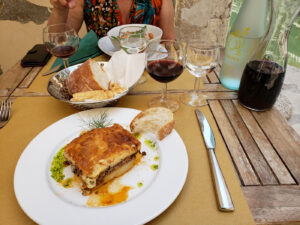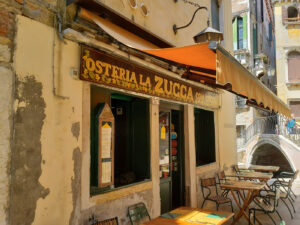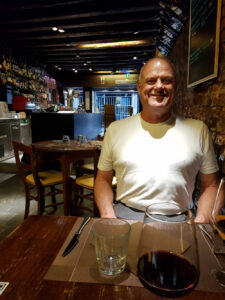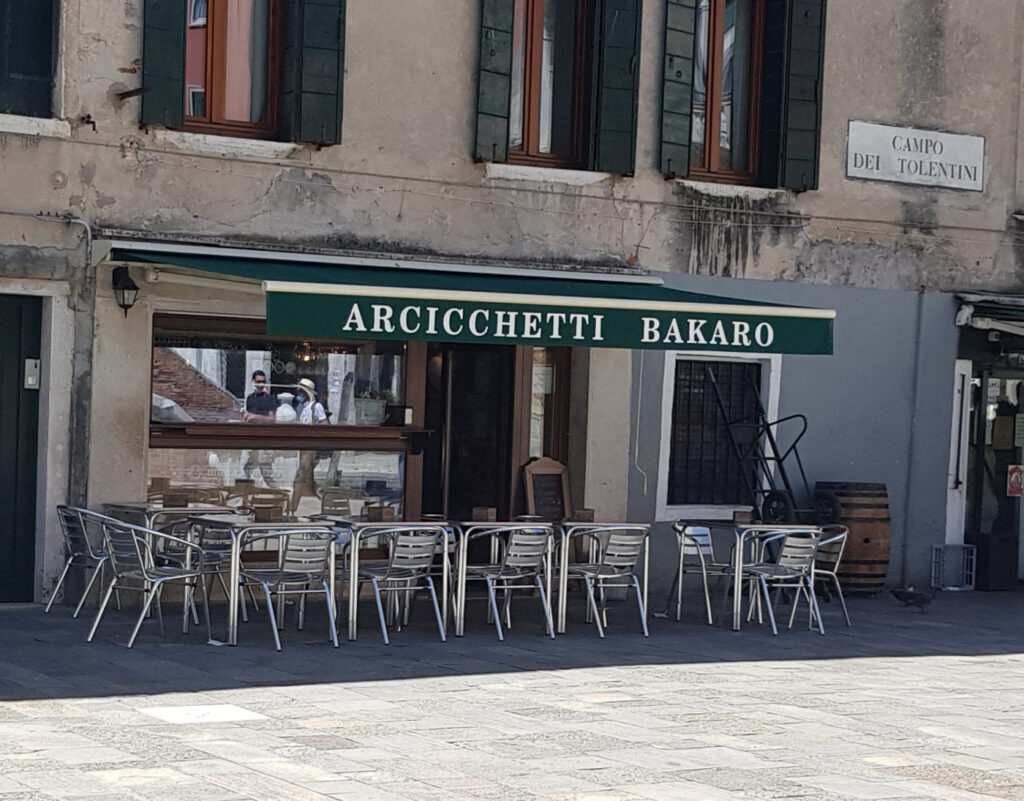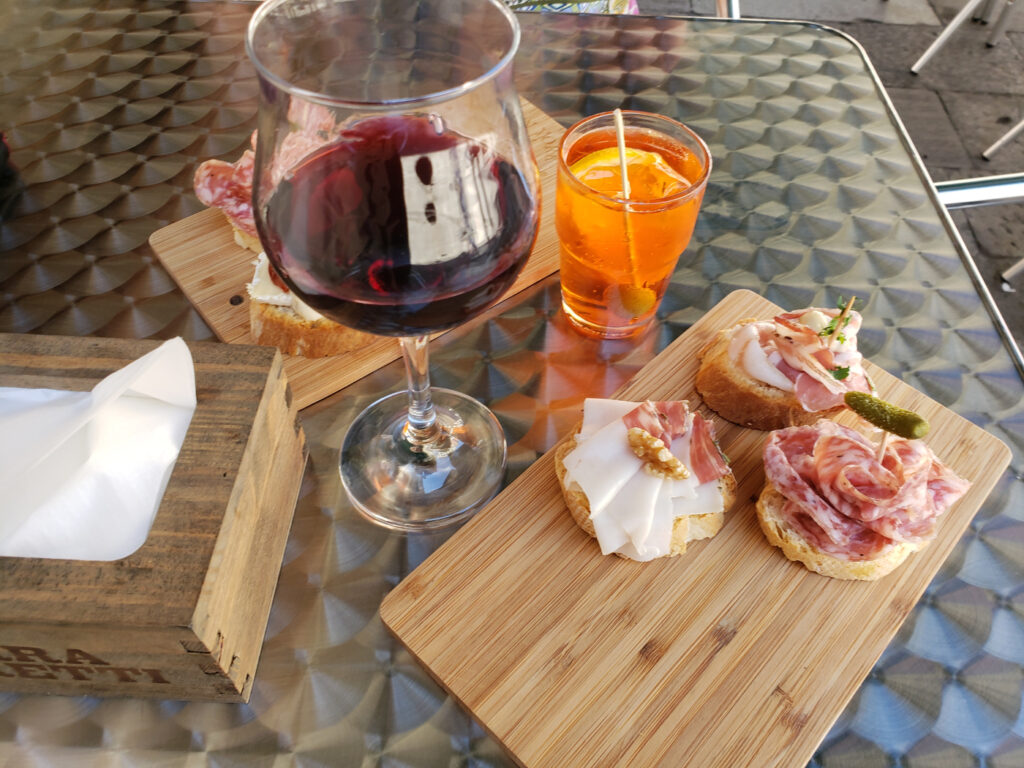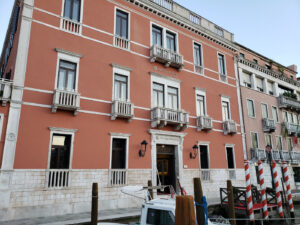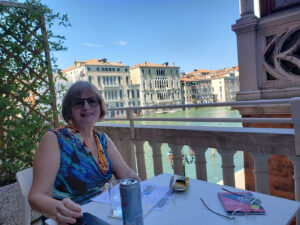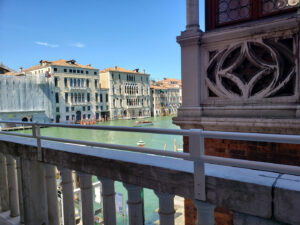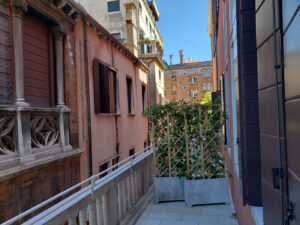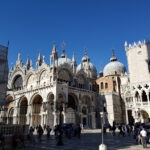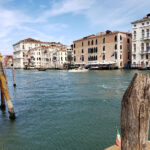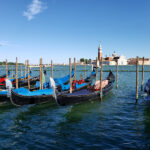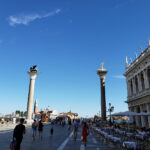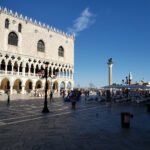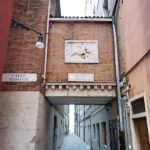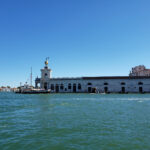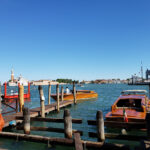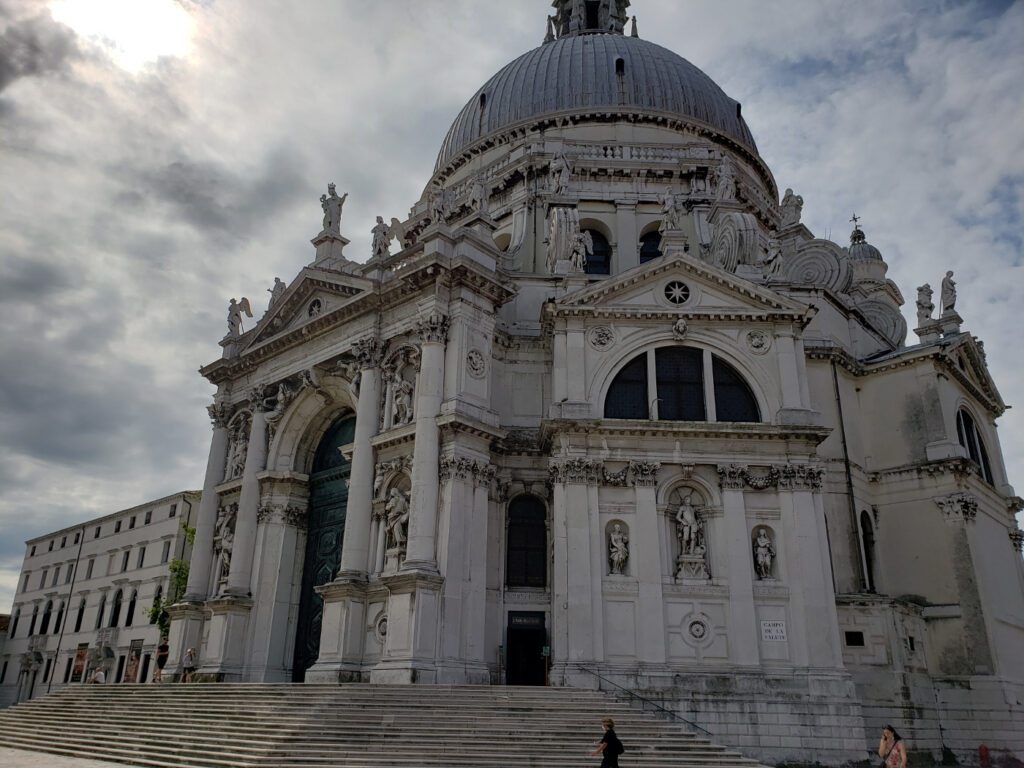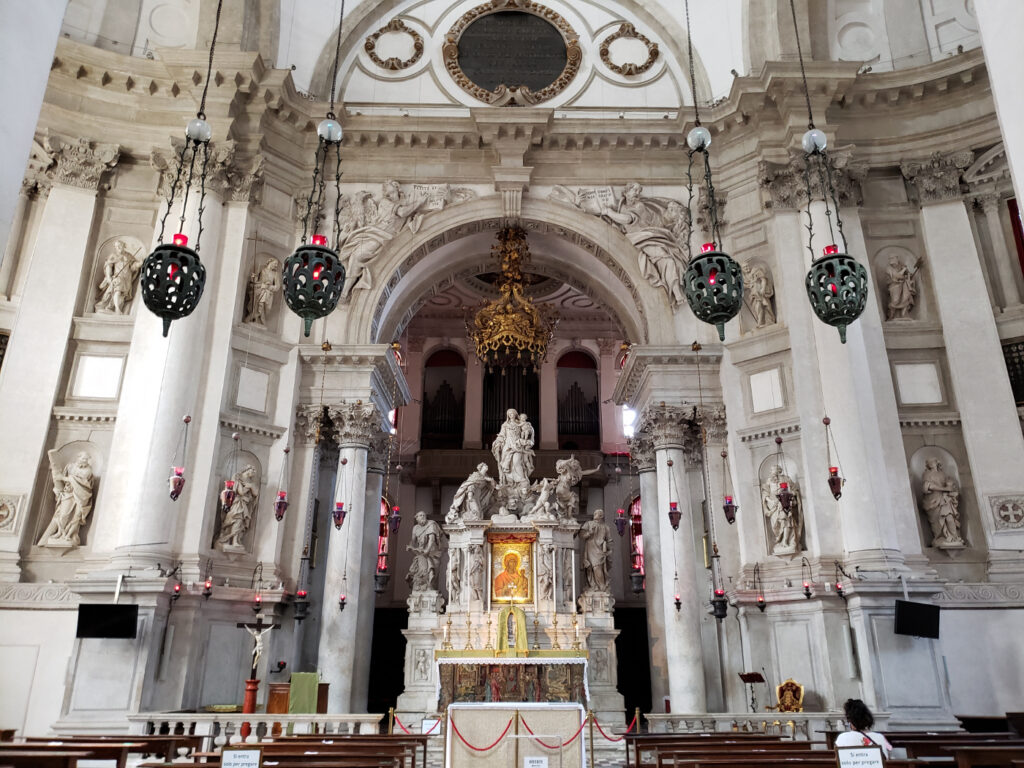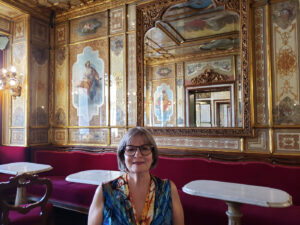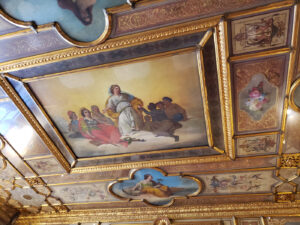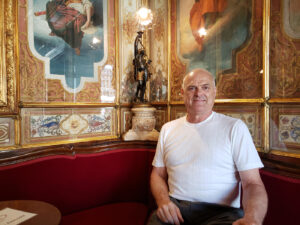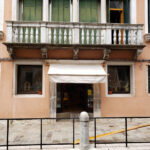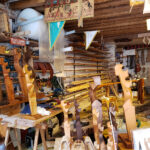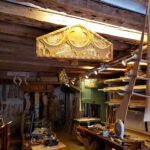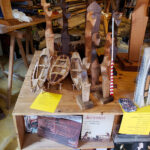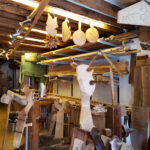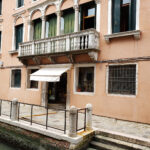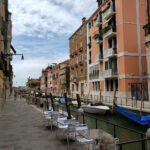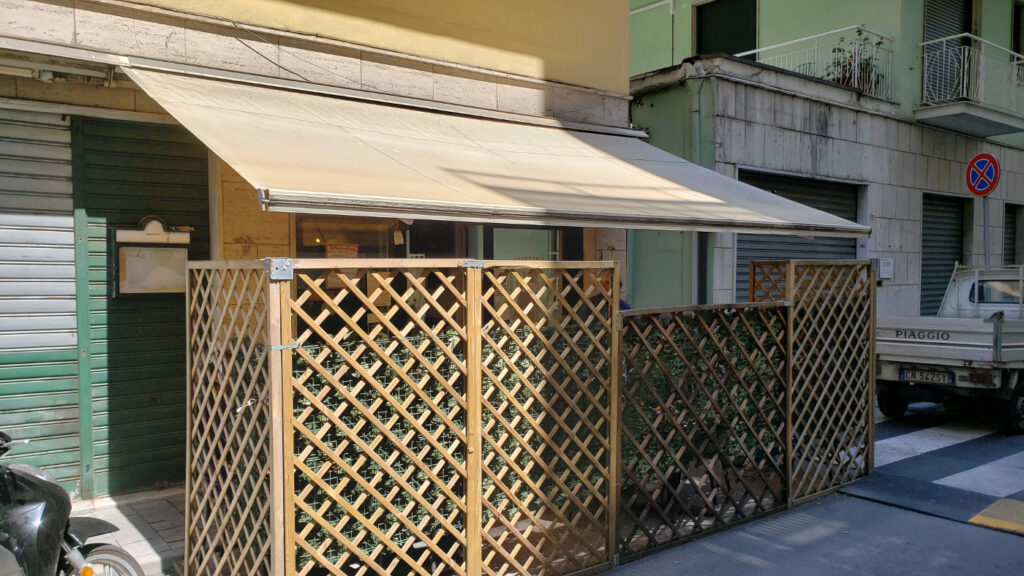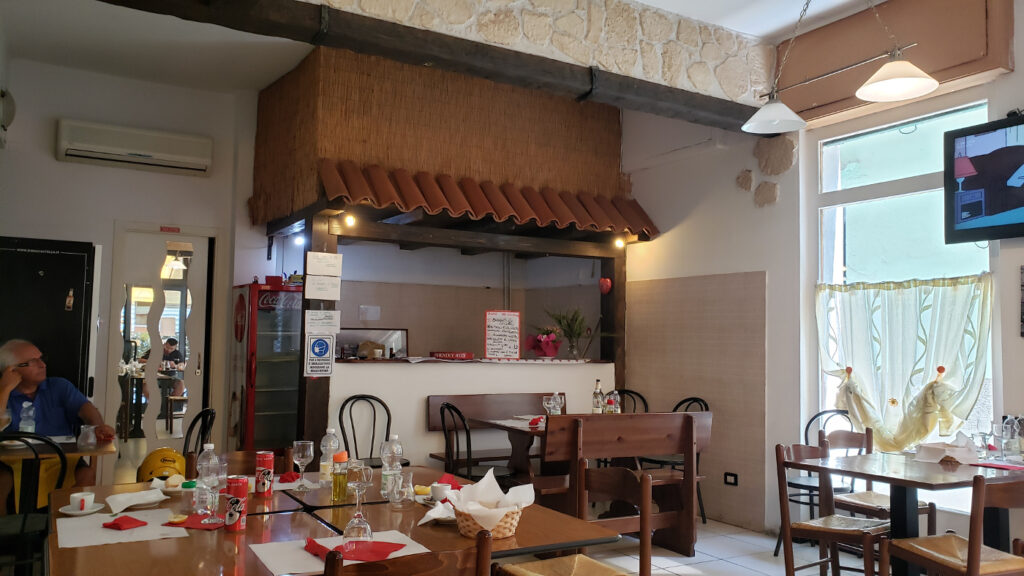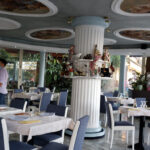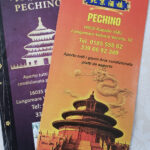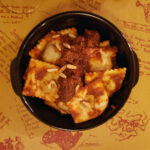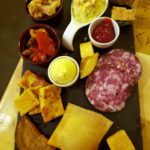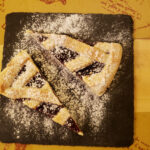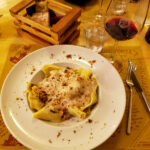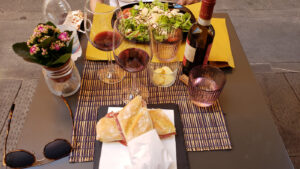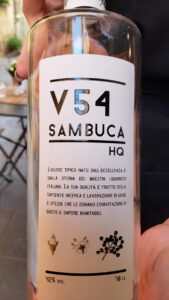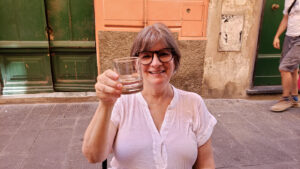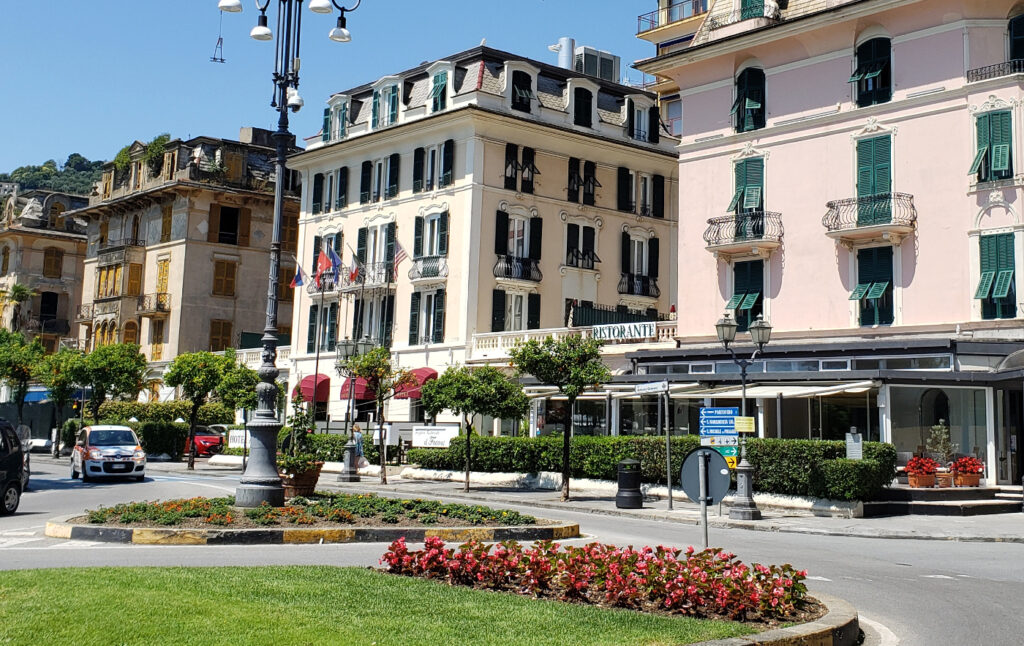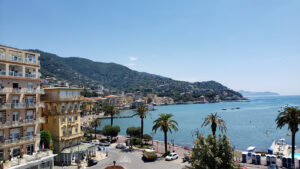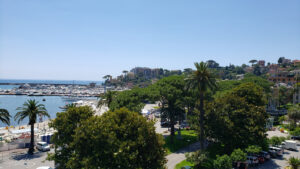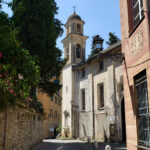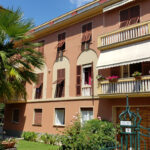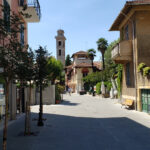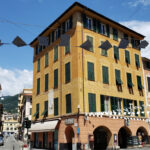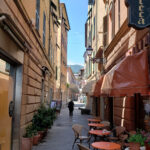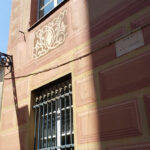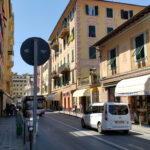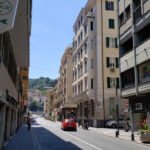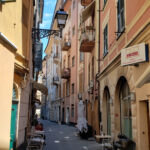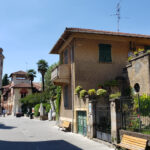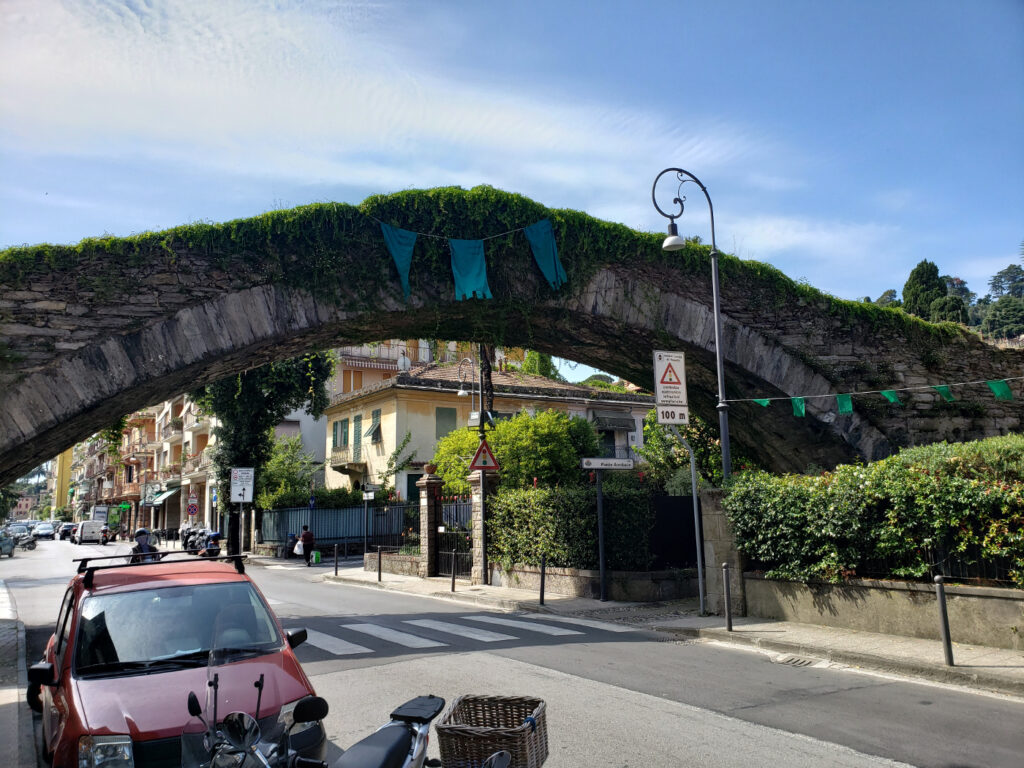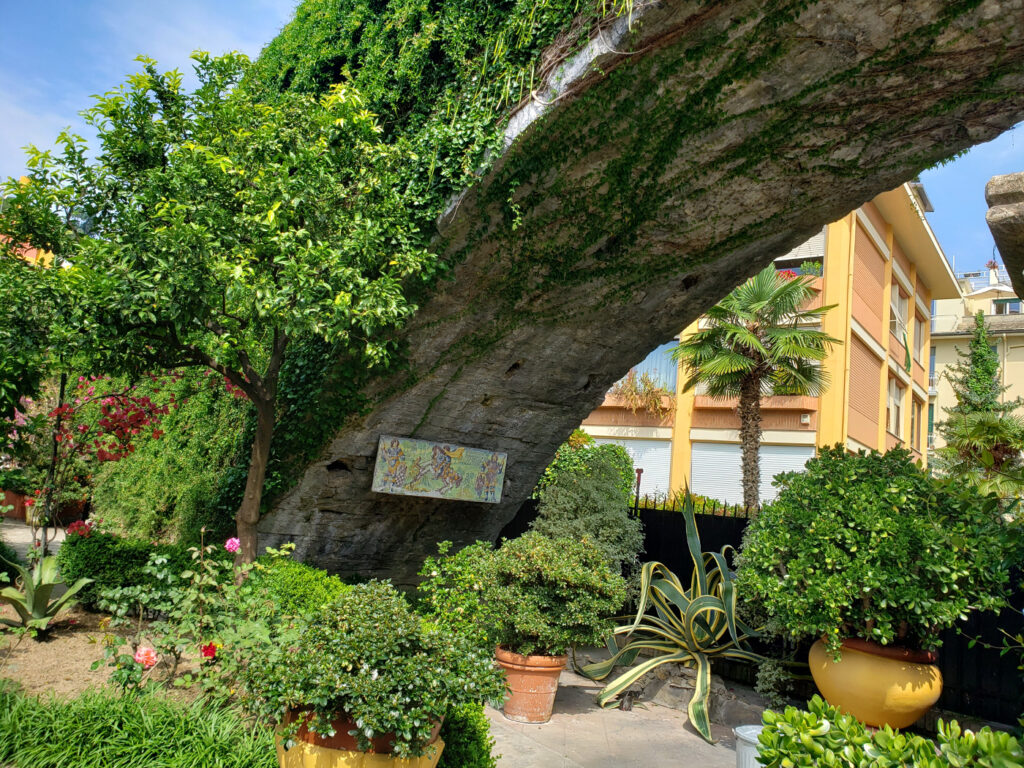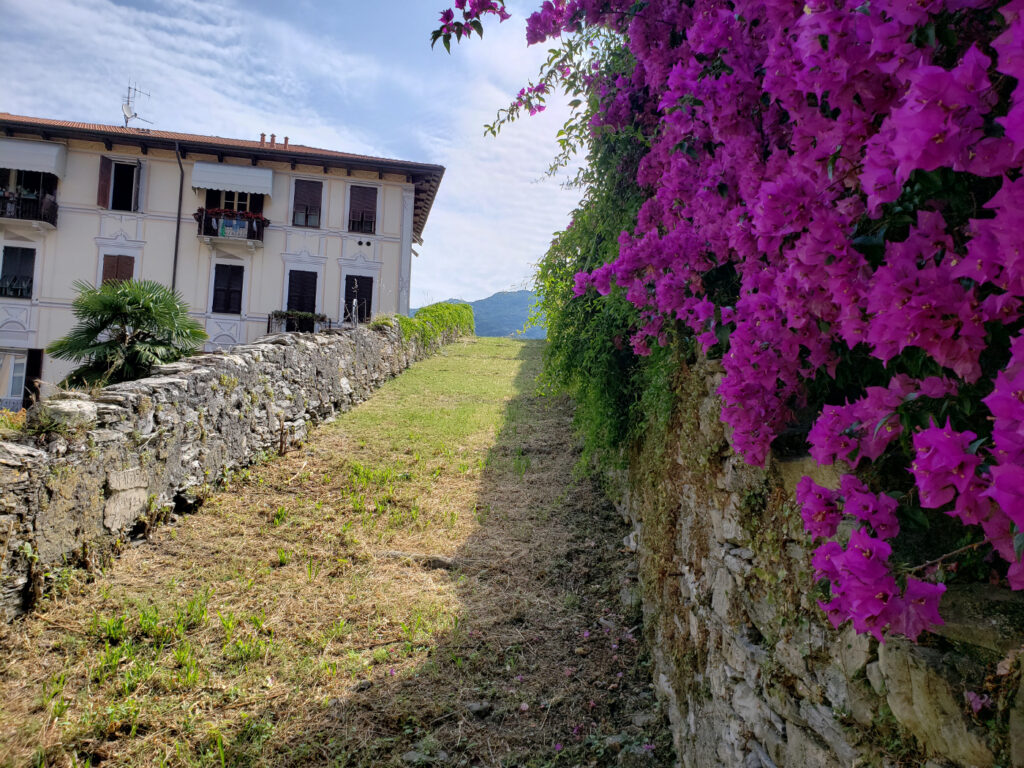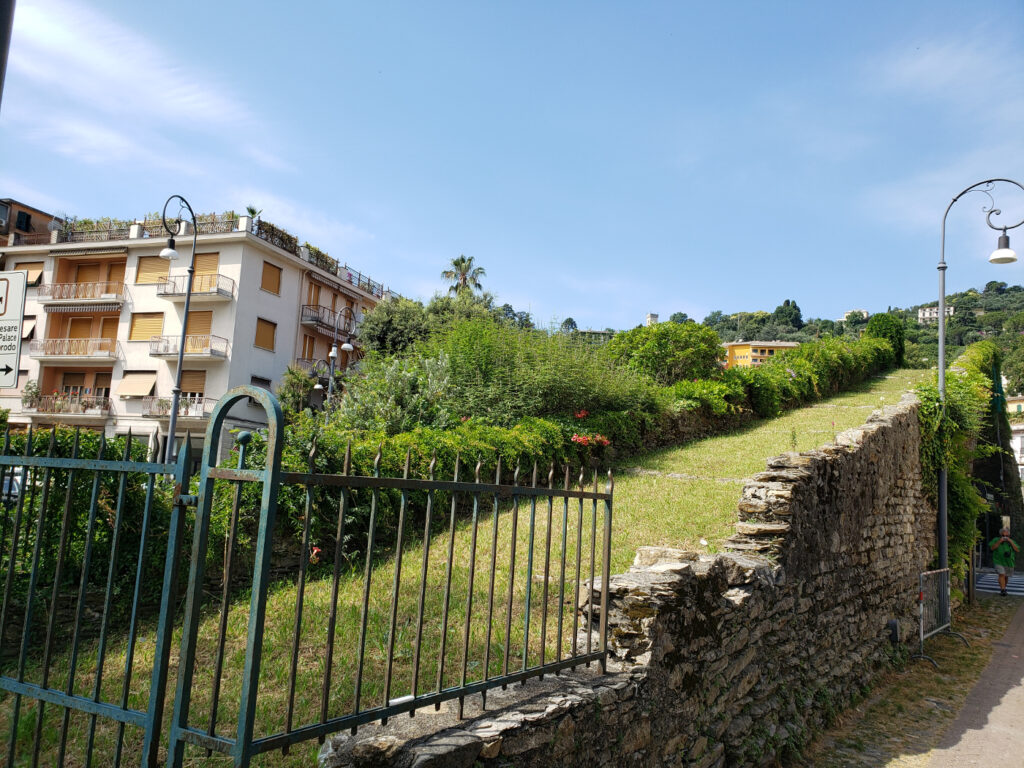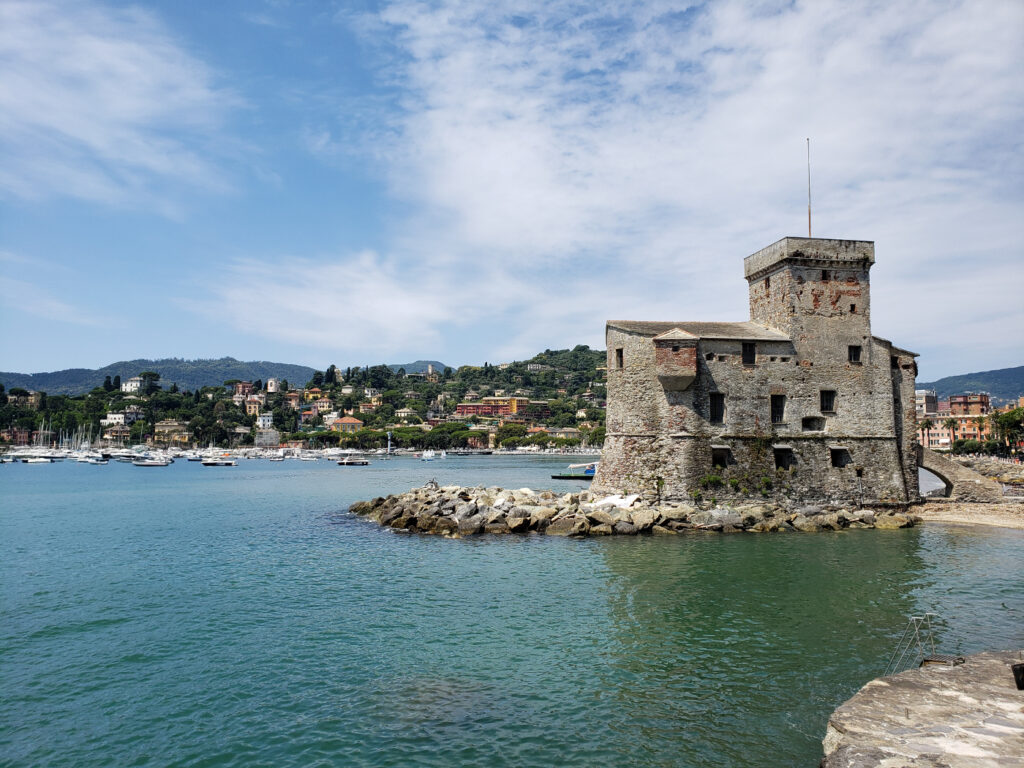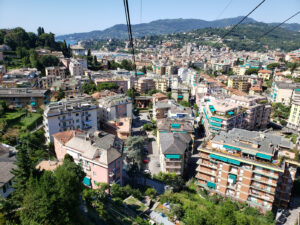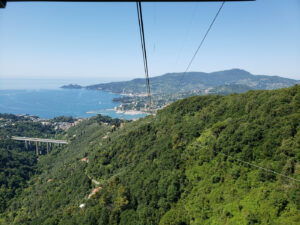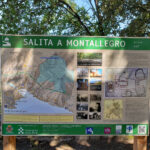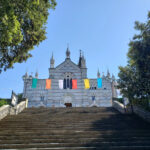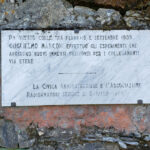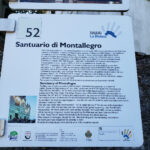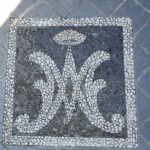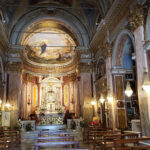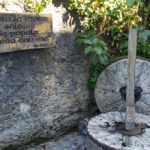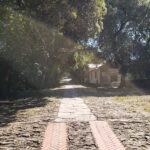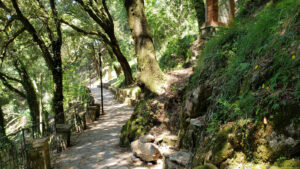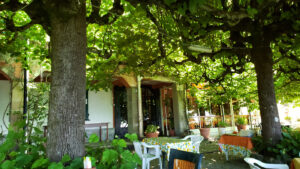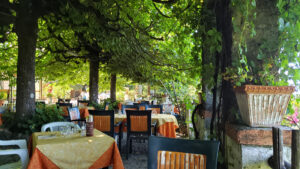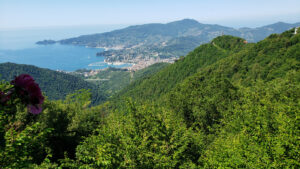Grindelwald – Kleine Scheidegg
At two thousand or so meters above sea level and little Grindelwald, is the small train interchange of the mountain pass at Kleine Scheidegg. Three separate lines run from here and it becomes a busy little beehive in the morning hours, less so in the afternoon, at least during summer.
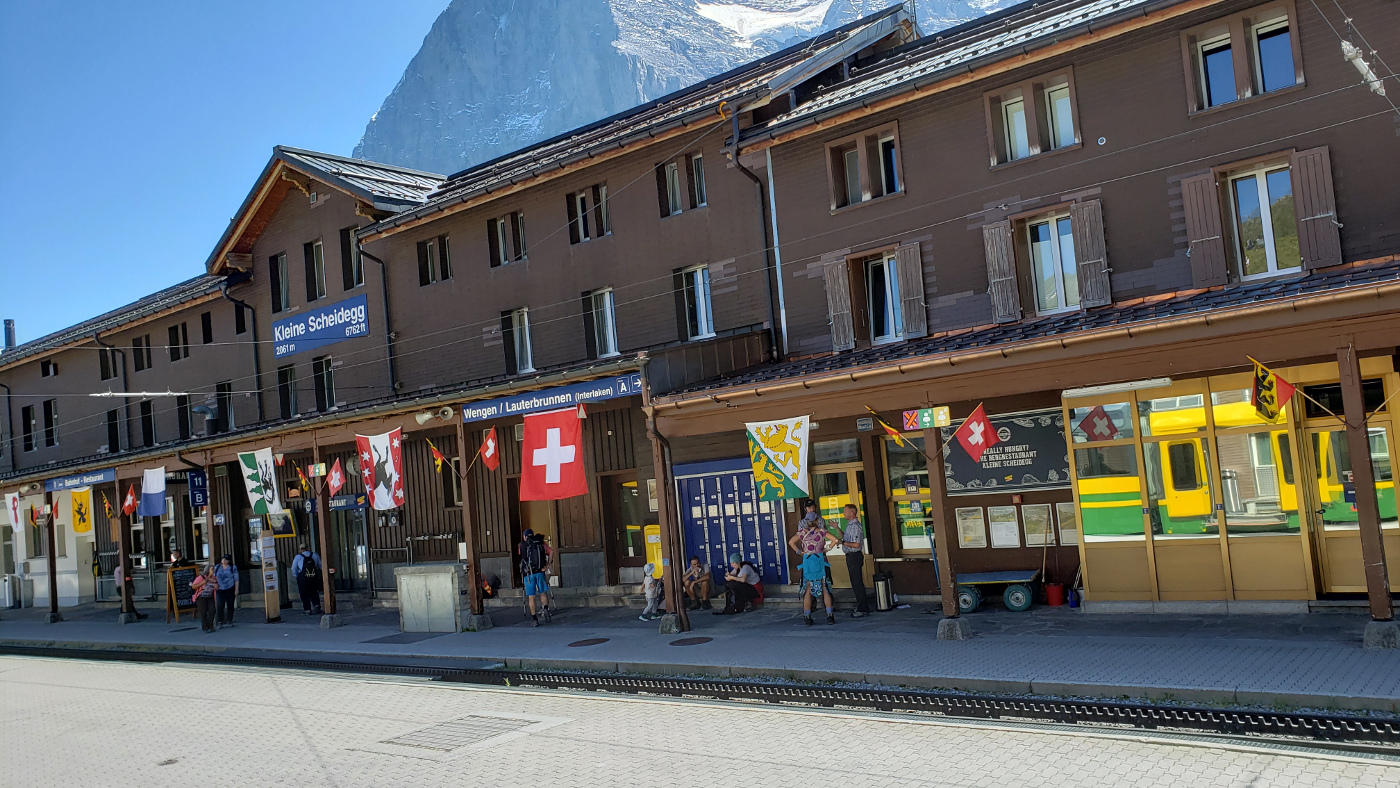
We purchased our tickets in Grindelwald station not thinking much about passes, which is actually a mistake, but live and learn. In any case, to get there you take the rack train, or cog train, from Grindelwald.
The way up takes about thirty minutes and there are about three stops along the way, including Grindelwald Grund, to pick up passengers who drive to take the train on a day trip. Since I forgot to take a video going up, here is a short one on the way down.
Note: Investigate getting a multi-day pass that includes the Jungfraujoch and traveling in the area. Especially if you are traveling with family or a group, this may save you serious money. The Jungfraujoch is an inclusive train/experience, so it will be a bit pricey, so any discount you can get may relieve the sticker shock.
Kleine Scheidegg
With the Hotel Bellevue, where Clint Eastwood stayed during the shooting of The Eiger Sanction, a movie based on the novel with the same name; Kleine Scheidegg is a collection of hotels, cafes and train lines to other parts, including Jungfraujoch and Lauterbrunnen.
The Eiger Glacier
Next to the imposing Eiger, the Eiger glacier drains its icy contents between itself and the Mönch, while Jungfrau sits idly by, to the right of both.
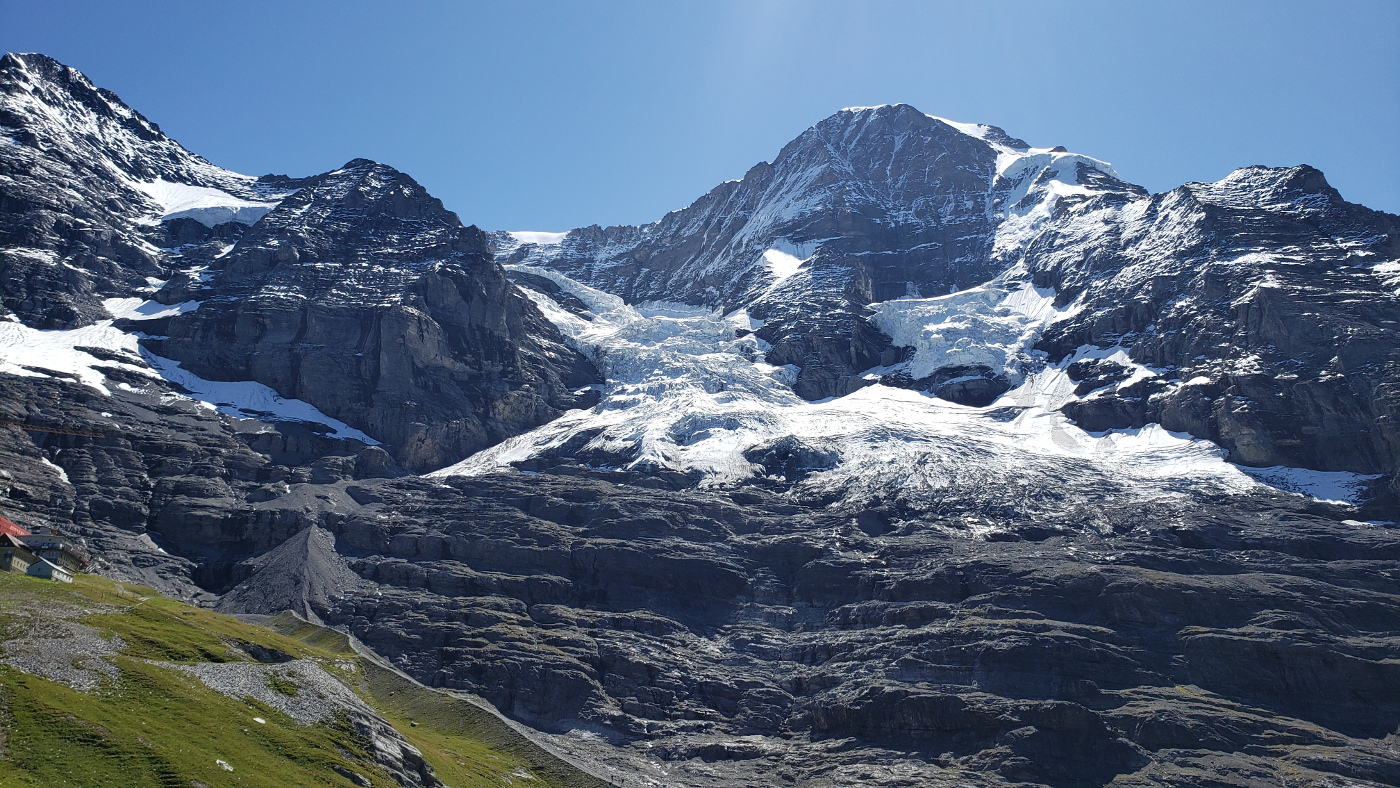
The hike from the train station up to the glacier is about an hour and can be quite demanding at time. There is loose gravel and some tricky places where you ascend. But it’s all worth it in the end, the views are amazing. Here is a slideshow of the sights that we saw on our trek up.
Restaurants
I hope you enjoyed our trip to the glacier and the area around it. We actually did eat at a small place here, it’s not much to look at, and at the time they only had window service because they are still in reduced operations.
Restaurant Eigernordwand
This little restaurant has very limited room inside and outside, so first come, first served, as they say. The menu is rather simple, but the food is very good. Like other places around and due to its location, the prices are on the high side, especially for window-only service.
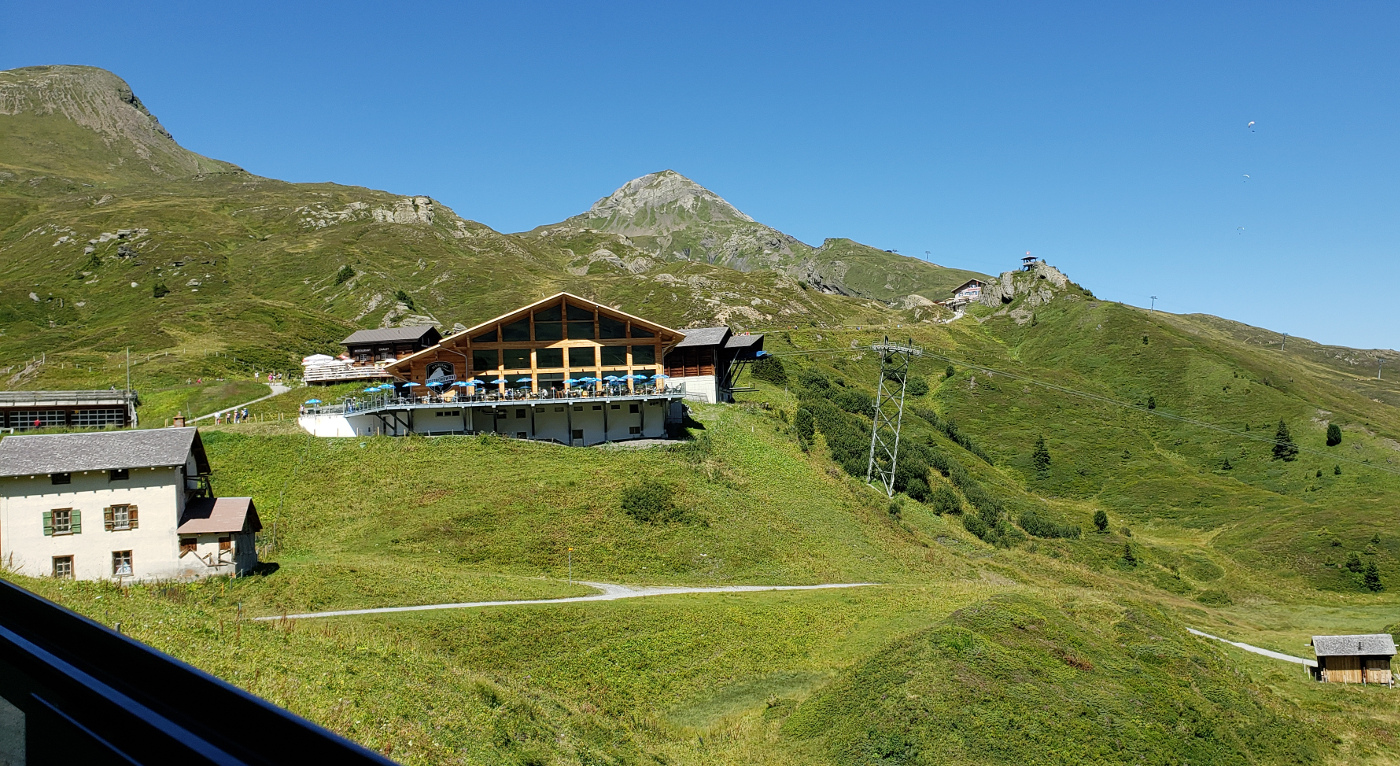
If you are traveling during virus restrictions, keep in mind that you have to remain flexible. So prices notwithstanding, we still enjoyed it and felt that we had a decent lunch when we left.
Our day trip ends with a short video of us pulling out of the Kleine Scheidegg station. Patti and I both agreed we have to visit during winter, to get the full feeling for this beautiful place.
Obertraun, Sankt Gilgen – The Better Alternatives
Having stayed in Salzburg for about three days, we were eager to explore other areas within the beautiful Austrian countryside. After discussing our options with our daughter Ericka and her boyfriend Gabi, and having heard so much about the little town of Hallstatt, we decided it might be a good idea to try and pay it a visit.
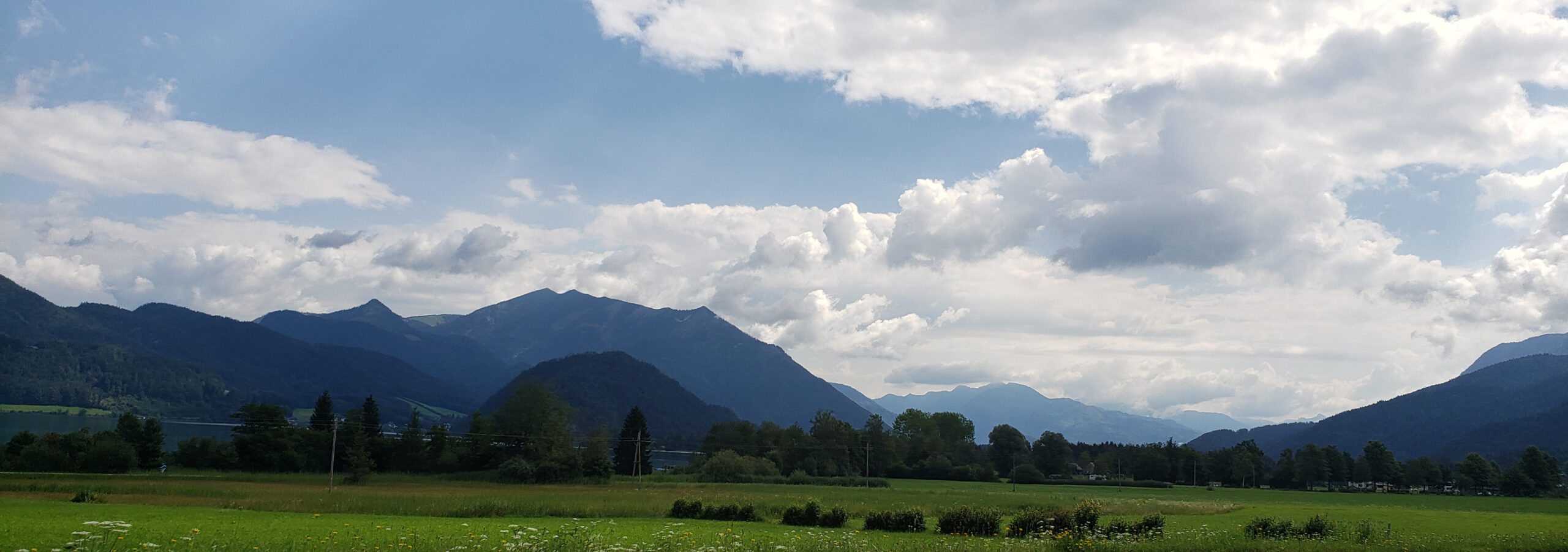
Hallstatt
From Salzburg, about a hour’s drive away or so, is the tiny town of Hallstatt. Billed by Rick Steves, and many others, as the place to see in Austria, the so called quintessential Austrian town – hemmed in by mountains on one side, the Hallstattersee on the other and a stream dividing it – it must have been, back in the day. I stress, must have been, because it is no longer, thanks to over-tourism.

It is much like Venice now, spoiled by the hords of people that descend upon it daily and ruin its quaint charm, it is nothing but a hollowed-out tourist trap. Do not bother going, unless of course you are willing to do the Covid-elbow-rub with thousands of others. It is so overrun, even in times like these, that they have parking attendants, much like they have in the US at a state fair! It is so bad, people park along the sides of the roads for kilometers and walk in, perhaps for up to an hour. Therefore, after several U-turns and mulling it over for ten minutes or so, we didn’t think it worth the risk, nor the increased burden on the town. We gladly passed it by…
Suggestion: With the exception of major cities, here is something you may want to try. If you have paid for a travel book, circle everything in it on a map, and just don’t go there. Part of traveling should be discovery, not necessarily traveling on someone else’s footsteps. Unless it’s large city, like Rome or Paris, I am sure the people in these tiny little towns – who have been targeted by the tourism industry – will thank you, if anyone still lives there.
In our travels, we have been in some seriously one horse towns, and though some may be considered down right boring, we have never regretted visiting any of them.
Obertraun
This tiny little place is not in anyone’s book and consequently, is nothing to look at, but it has fantastic views. It has a beautiful park where you can walk and enjoy the day, you can even make arrangements to go swimming, boating or paddle-boarding.
Additionally, there are ferry rides that can take you to other places along the lake. At the time we were here, they were running a reduced scheduled, so you may want to have alternate plans, if planning a visit soon.
Sankt Gilgen
Another quiet little gem is the small town of St. Gilgen, or Sankt Gilgen. It is on the road to Salzburg along the Wolfgangsee. We spent a quiet afternoon here, eating lunch, walking and talking and enjoying the town, almost tourist-free.
This little town seems to enjoy mostly local tourists, probably from the surrounding countryside, eager to get out and relax in the beautiful waters of the Wolfgangsee. There appears to be a host of things you can do on the water, as well as cycling, camping and just sunbathing.
After our initial disappointment with Hallstatt, we were glad we made the day-trip to see these two unexpected surprises in the Austrian countryside.
Salzburg – Home Of Mozart
Salzburg is the name for both the state and capitol of Salzburg. It is also the birthplace of Wolfgang Amadeus Mozart, arguably a genius and the most accomplished musician and composer of all time.
Wolfgang Amadeus Mozart also lived in Salzburg, along with his family. One can visit the Mozart Wohnhaus, which today is a museum. The cost for entry is around 12€ per person, 10€ for senior citizens. There are also family and group rates. The fee comes with an audio guide which is filled more with music than biographical data. The museum has quite a collection of artifacts from his life, especially numerous letters he wrote to his wife. One can go through the entire six rooms in less than an hour.
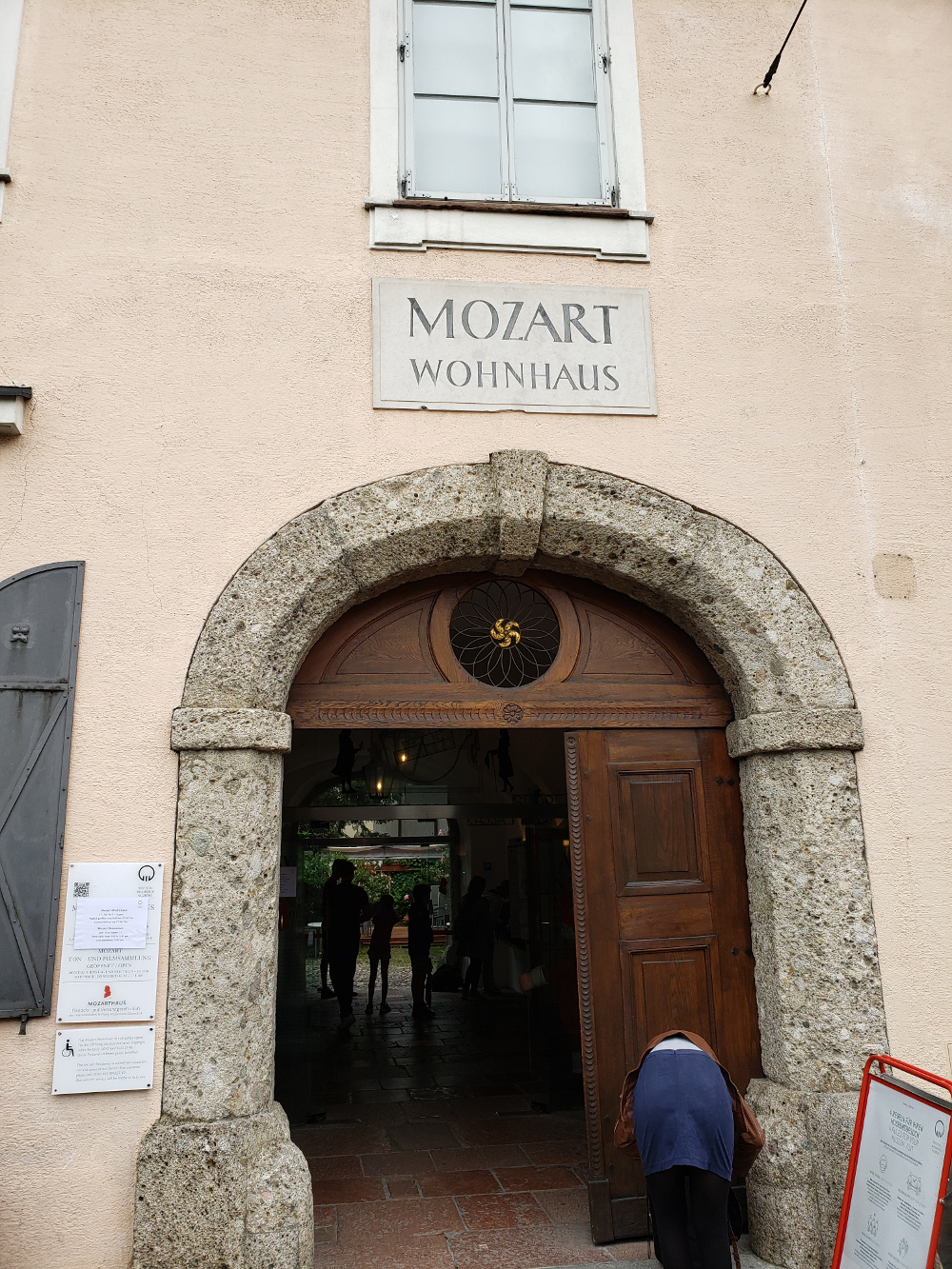
While in the museum you will learn some interesting facts about the composer, for example his stature. He was on one and half meters, or fifty-eight, fifty-nine inches or about five feet tall. I guess what he lacked in height he gained in his ability to play and compose extraordinary pieces of music. Worth a visit if you have the time.
A Walkable City
Salzburg is by every measure, very walkable. The city also enjoys a very robust electric bus system and plenty of alternative forms of transportation, including bicycles, electric personal scooters and even river boats.
Mirabellgarten
The Mirabellgarten in Salzburg is a great place to take some time back from walking and the general hustle and bustle of seeing the sights. It is located toward the river Salzach on the East side of the city.
The garden belongs with the Schloss Mirabell, which is an imposing structure and site. It has ample seating and benches along its borders to sit and enjoy the flowers and its grand fountain, the Vier-Elemente-Brunnen.
Hohensalzburg Fortress
The Hohensalzburg Fortress sits atop the Festungsberg, or fortress hill, of Salzburg. It has a commanding view of the city and the countryside. Apparently build in four stages it became a formidable fortress in its hayday.

For around 12€, the basic entry pass get’s a trip on the fernicular rail to the top and back and entrance in to most areas of the castle, excluding the bishop’s quarters. The entire reason for even having a fortress is to command military might in the region, the fortress has several rooms around this theme.
There is also a Marionette or Puppet Museum on the premises. It has several works by a famous Puppeteer Master and several diorama around their history and use. A very interesting museum for the younger audience.
The remainder of the fortress includes the history of the actual structure, how people lived inside its walls and the involvement of the church in it’s operations. Here are some additional scenes from the fortress.
Finally, residents of Salzburg are often referred to as Stierwasher or “Bull Washers”. This epithet comes from a tale out of the Siege of the Fortress during the great Peasants’ Uprising. Apparently the fortress was staring to run out of food and one soldier had a great idea. He took the bull that was left and painted it a color, then he went down and show his enemies the bull. He did this for several days, painting the bull a different color each day. At some point the enemies decided the fortress still had too much food and they would never be starved out, so they retreated and left. A happy ending, I guess, except it took the population several days to wash all the paint that had accumulated on the bull, giving them the name Bull Washers!
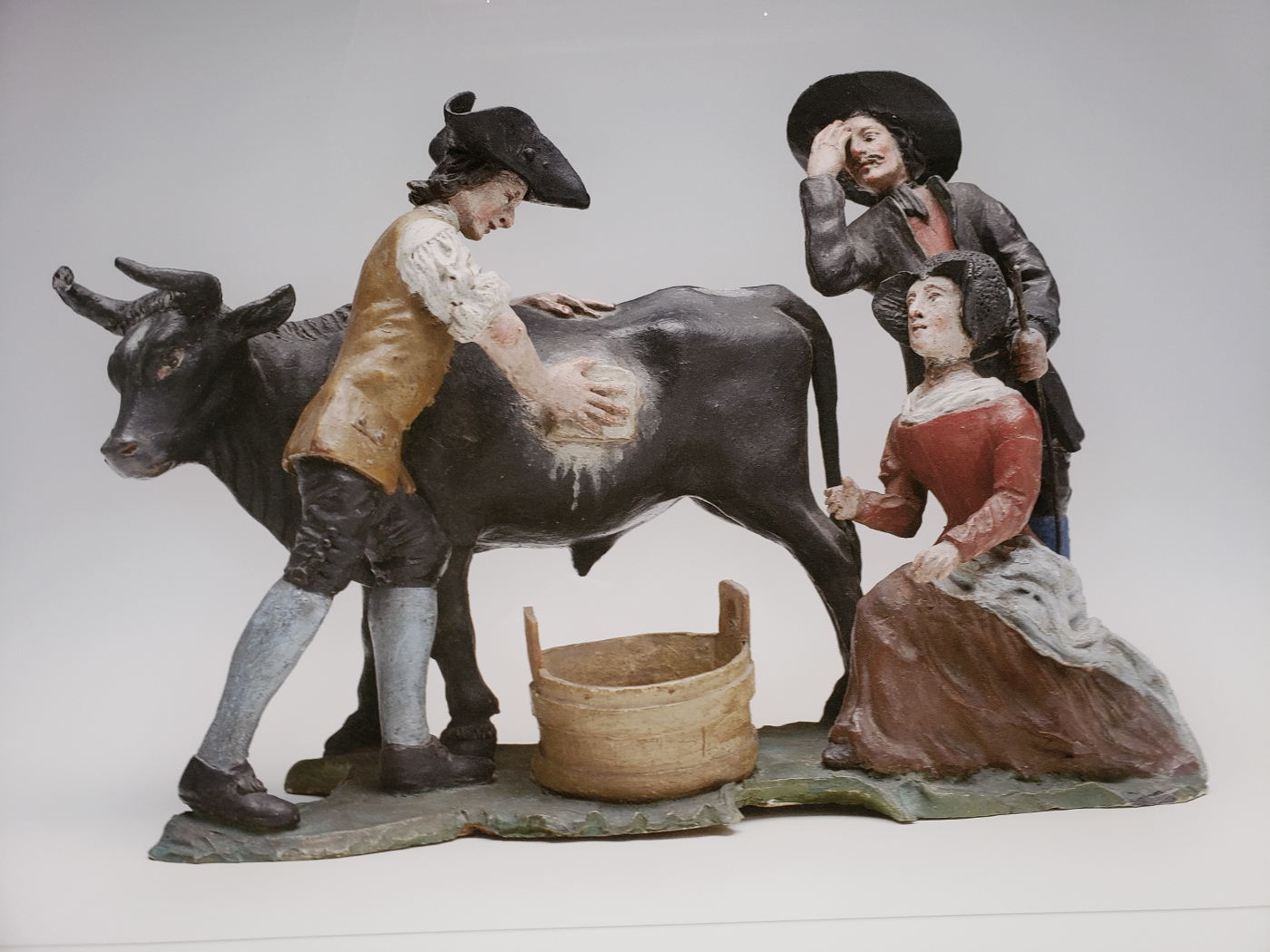
Kapuziner Kirche Und Kloster
The Kapuziner Kirche and Kloster sits atop of Salzburg, with an amazing overlook of the city. There is a short climb to get up there, but once there, the overlook is great.
Unfortunately, we had a rather rainy morning when we ascended to take our photographs, but they still came out pretty well.
Restaurants
While in Salzburg we visited the following notable restaurants.
Gasthof Alter Fuchs
The Gasthof Alter Fuchs is a typical Austrian restaurant, serving typical cuisine for the area. They have, “die beliebten Klassiker der österreichischen Küche“, or the most beloved classic of Austrian cuisine, Wiener Schnitzel and more on the menu.
Everything we ordered was delicious and with wine and water it all came to less than 50€!
Sternbräu Biergarten
The Sternbräu Restaurant and Biergarten is billed as delivering authentic Austrian cuisine. Their menu seems to be full of unfamiliar items, for example Salzburger Nockerl, and many favorites like Bratwurst. A very busy and large place that seems to have many servers, but even so, you may find service a bit slow.
We were hungry, so had a rather big lunch that included wine, water and the items shown above. Budget-wise, this place is a bit more expensive than some others, so be prepared to pay a small premium for wine and perhaps even beer. Our entire lunch came to 69€.
Cafe Tomaselli
Apparently one of the places for a drink to go in Salzburg is Cafe Tomaselli. They also serve breakfast and some other small things like ice cream. We stopped here for a quick drink and found the prices fair and drinks very good.
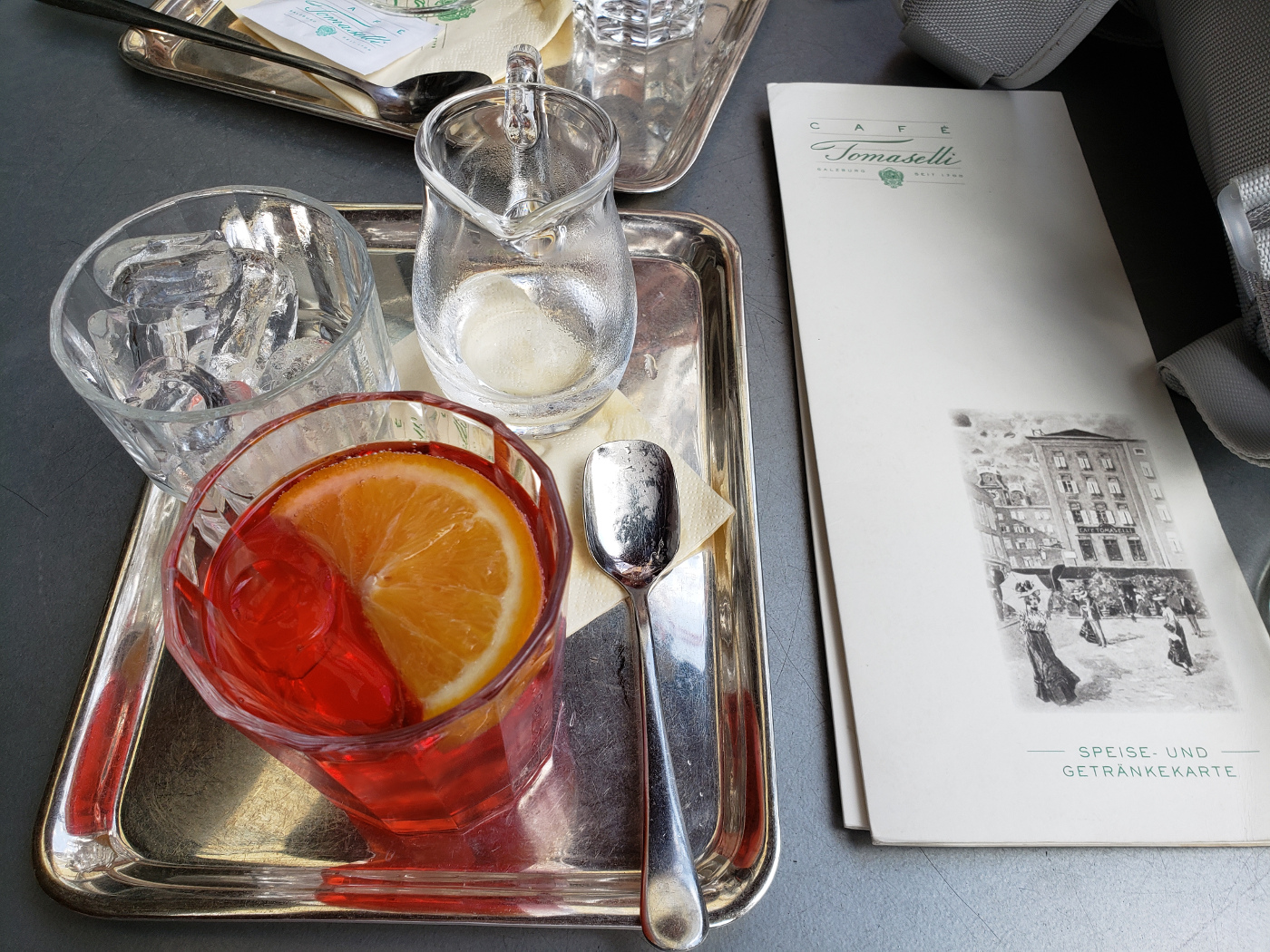
We ordered an Iced Coffee with Vanilla Ice Cream and a Campari with Soda and the bill came to 11.60€
Gasthof Wilder Mann
Another great place for lunch is the Gasthof Wilder Mann. The Eintopf, or soup we can say is fresh and first rate. We had the Vegetable Beef Eintopf, which came with a lot of beef, yellow and orange carrots and thin spaghetti noodles. It was spiced just right and delicious.
We also order water, white wine, a Mixed Salad with Chicken, coffee and schnaps, and our bill came to 44€.
Klagenfurt – Wörthersee
There is no trip to Klagenfurt am Wörthersee worth its while, without visiting its namesake, the Wörthersee. A short twelve minute ride on the S1 train to Pörtschach am Wörthersee, will put you directly in the middle of the lake. We thought it a great place to take a day trip.
Our plan was to take the train from Klagenfurt Hbf, see the town, walk around the lake a bit, enjoy a nice lunch and then take a boat ride back to Klagenfurt. The weather was beautiful and everything went according to plan. Well almost, we actually stretched it out a bit, since the weather was so nice.
Pörtschach am Wörthersee
This little town is perhaps the main spot along the entire lake. Though we did not go to Velden, it had the look and feel of a long established tourist town for local Austrians. This appears to be their place to come, relax, play, eat and generally have fun. Here is a quick slideshow of the views along the lake.
There is also a waterpark on the Spitz, that requires a fee to enter, but provides everything from sunbathing and waterslides into the lake, to picnicing for the day on the small island.
The town is some three hundred meters or so from the actual lake, but gives you the impression that it is a laid back tourist town. There are many amenities and stores for tourists to shop in, including bike rentals, hiking and trekking gear, etc.
The Lake Boat Ride
There is a boat, in fact I think there are several, the travels up and down the lake carrying passengers from one small town to the next. It runs every hour or so and takes over an hour to complete the full length of the lake itself. It is another nice way to take short trips all along the lake, or just a nice gentle boat ride to see the lake for itself.
Well that’s just about it for Pörtschach and the Wörthersee. We have a great day seeing it and enjoying a nice lunch along the water. The weather was just gorgeous. Here are a few video clips while we were on the boat.
On to other places of interest, next stop, Salzburg.
Klagenfurt – Carinthia’s Capitol
Gruss Gott! This is the customary greeting when you visit Austria. Though many speak English here, they will still use this greeting upon meeting you. So, become an Austrian for a day and smile and say it back, it’s easy.
Nestled in the heart of Carinthia is its capitol, Klagenfurt am Wörthersee. Though at first a bit abstract and hard to get a feel for it, after a few days stay and talking to the people in their own language, we have actually become very comfortable with this happy little city. It is quite open at the moment showing little affects of the pandemic, though one can see the occasional store closed (though it might not be related.)

The Capitol’s Main Sights
There are of course several sites here to see, some religious, some governmental and others historic. The best way to show this is a quick slide show, since there really is no better way to cover so much succintly.
Lindwurmbrunnen
An interesting Brunnen, or fountain, is the Lindwurnbrunnen in Neuer Platz. This fountain is actually central to the fable or history of the creation of Klagenfurt.
The inscription tells some of the tale in a very abbreviated form. The actual fable or story unfolded more like the following.
A Lindwurm once lived in the swamp around Klagenfurt. The river that flows through the city often flooded. This threatened travelers and city dwellers and a Dragon was thought to be the cause of these floods. It was actually a Lindworm. The Duke offered a reward for which some men tied a bull to a chain and offered it to the Lindwurm. When it took the bate, it was hooked and then swiftly killed.
Wörtherseemandl
The Wörtherseemandl is a small tourist attraction close to the sister city pavement marker. I do not think there is much meaning behind it, other than a piece of art that someone created for the city.
Restaurants
We visited only two restaurants while in the city proper, one was Italian, which will not be covered since it is not Austrian. Though if you are ever in the city and looking for Italian food there are several restaurants around.
Haus am Markt
The HAM, or the Haus am Markt restaurant is typical Austrian, or more precisely Carinthian food.
A small clip of the Oom-pa Two Person band we enjoyed while eating, how Austrian!
We go next to the actual Wörthersee for a special day and boat trip on the lake. So stay tuned! Auf Wiedersehen!
Venice – Without Tourists – Part Three
This last part, includes some of the additional things we were able to enjoy while in Venice, especially good places to dine. We found it takes about a week to get a really good feel for Venice. We also think it’s especially true that you have not really seen Venice until you have visited the other islands, as well as other out-of-the-way places around Venice proper.
Other Interesting Sights
For those that love architecture you will want to see the Palazzo Contarini del Bovolo, Corte Contarina in San Marco. A bit of a challeng to find, but when you get close enough, there are signs pointing the way. They of course use Scala not Palazzo, for stairs, so do not let that confuse you!
Another great sight is the tiniest alleyway in Venice. Called Calle Varisco, or sometimes Calletta Varisco (incorrectly mind you). It is a fairly narrow passage that goes nowhere, or more precisely, a canal of all things. But there are others in and around Venice, that are likewise very narrow, for example the Calle de la Raffineria.
There are also several impressive 24-hour clocks that are in and around Venice. Though not terribly easy to find, with some research and a flexible itinerary, they make wonderful sights to see.
Restaurants
We ate at many good and one fine restaurants while in Venice, here is our take on each.
Bistrot de Venise
Probably some of the finest dining in Venice, the Bistrot de Venise has a menu and winelist that rate high on our list. A bit pricey, but if you can afford it and go with the flow, that is, let them do their job, you will not be disappointed.
Ristorante Antica Sacrestia
Another jewel in the crown of Venice is the Ristorante Antica Sacrestia. Rather humble from the outside, the inside is a nice little courtyard with stone, well shaded from the midday sun. Perfect for the lunchtime replenishment.
Osteria la Zucca
Osteria la Zucca con Cucina is a very nice place for true Venetian cuisine. If you are looking for some home-cooked Italian food, this is you place. I can speak from experience, the Mousakka is great, as is the house wine.
Ristorante Rosa Rossa
Ristorante Rosa Rossa on Calle de la Mandola, is a restaurant and pizzeria and is great for families, small gatherings and couples, with plenty of outside seating. Their pizza is delicious and large enough for two to share, when accompanied with salad and drinks.
Cicchetti Arciccchetti Bakaro
Last but not least, if you are in Venice, you have to visit a cicchetti. While walking around, you might see signs about cicchetti this and cicchetti that, but it’s usually simple street food served at a bar. Normally, there is a selection which you may pick and choose from, along with assorted drinks that can be ordered at the same. We stopped here while just out for a long walk. The Deli bites were one for a Euro and drinks were as usual, pretty inexpensive.
Conclusion
As opposed to our last whirlwind tour of Venice, this trip was a totally different and a more enjoyable experience. Not only the lack of tourists has helped my own opinion of Venice, but also the Summer heat has cooperated and our length of stay was what we would call minimal (one week). There is plenty to see for sure. If the factors are conducive and you are able to spend more than a week, I would, just to get a better overall feel for Venice. However, the amount of tourism they let come back, will dictate whether or not Venice will feel like a place you would want to stay longer than a week. That remains to be seen.
Our next stop takes us to Austria, so stay tuned for our adventures and insights there; until then, Ciao!
Venice – Without Tourists – Part One
Arriving over the weekend with the expectation of finding few, if any tourist in Venice, we were pleasantly surprised. Apparently, we have beaten the rush to see some remarkable tourist spots, without all the international hords.
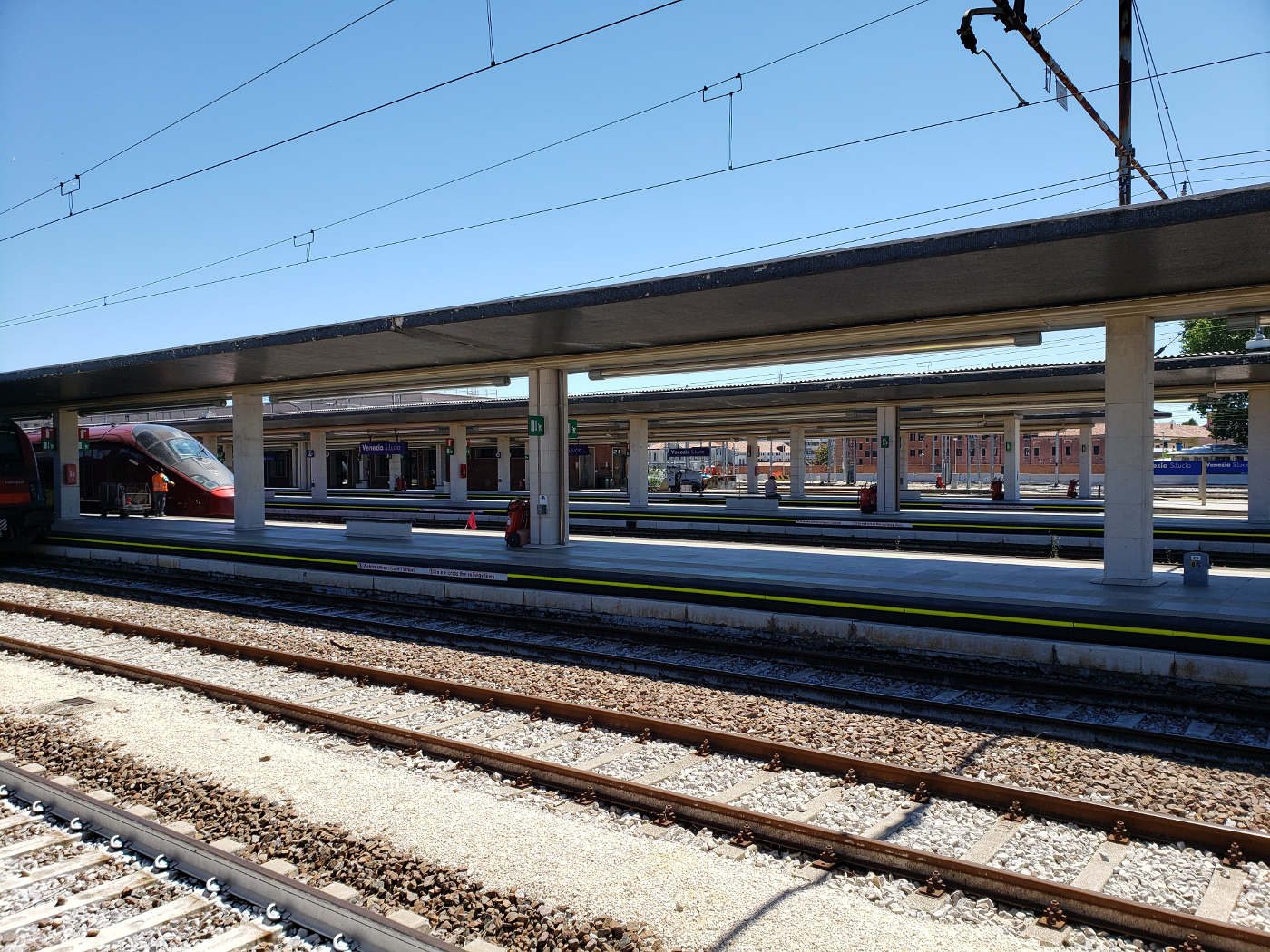
Hotel NH Collection Venezia Palazzo Barocci
We chose this four star hotel for its location to the Grand Canal and a pier for the Vaporettos, or ferries, that connect all of the islands together. We were not disappointed, it definitely has all the access we were looking for along with other comforts, amenities and conveniences we wanted, plus it’s very quiet.
Piazza San Marco
Usually abuzz with activity, this square or piazza is usually crowded during this time of year, with countless tourists. We have been fortunate to be here at this time, while the rest of the world struggles with how to cope with their outbreaks.
Santa Maria della Salute
One of the four plague basilicas in Venice, the Santa Maria della Salute, contains a rare Black Madonna. The altar is especially grand.
The view from the end of the island, just down from Santa Maria, is amazing.

Caffè Florian
Established in 1720, Cafe Florian is arguably the oldest cafe in the world. It was amazing to sit and enjoy a drink in an establishment, that frankly is older than my own country.
Pastor Saverio Le Forcole
The old art of carving and developing individual forcole for Venetian gondola rowers goes way back and is passed down from master to apprentice after a lengthy teaching process. Pastor Saverio is one of four masters still performing his art on the island.
If you are ever in Venice you should look him up. He speaks English and is willing to talk to anyone who has questions about his art and how it is used. You can probably spend hours doing just that, but he does have to work, so keep that in mind.
Okay, enough for now, we are here for the entire week and will probably post more once we get a few moments of down time. Next stops are the other islands of Murano, Burano and Torcello.
Rapallo – Tiny, But Rich In Food
Part Two
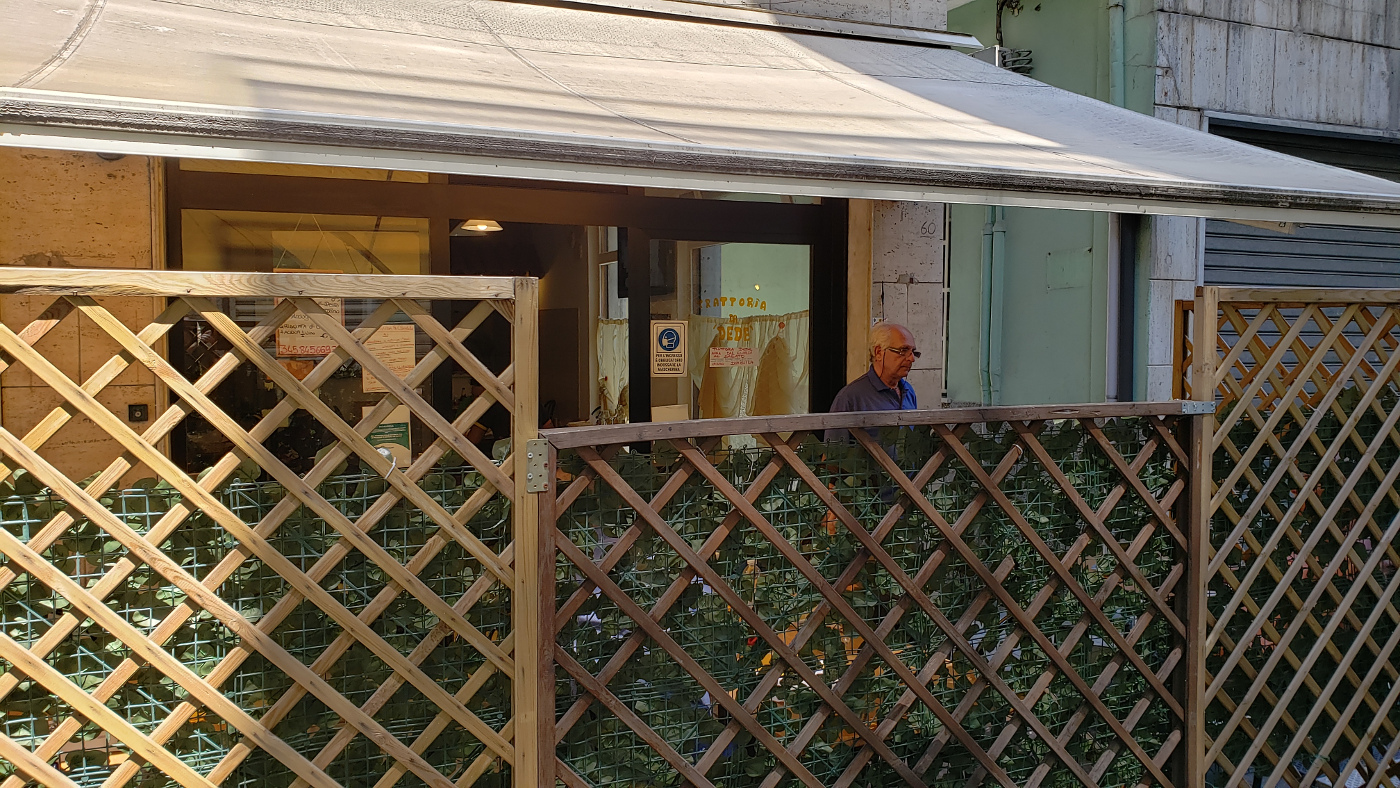
The Restaurants
As can be imagined, there are many restaurants in Rapallo with many different cuisines, the main ones featuring typical Ligurian dishes. Here is a brief synopsis of some of the restaurants we enjoyed during our stay.
Trattoria Da Dede
The front of this restaurant is nothing actually to look at, but as is often the case in Italy, looks can be deceiving and for our first lunch here it proved to be true.
Trattoria Da Dede is an inconspicuous store on a back street called via Santa Benedetto with no real call to fame. They serve everyday, workerman food here, the kind momma cooks for a very good price. While there, we were the only non-local; most of the clientele were on their lunch break. Ordering is easy, select any one of four main dishes the restaurant offers for lunch and wash it down with water and a caffe and you are all done. Eat like a Ligurian, stop here and enjoy the food!
Ristorante Pechino
Pining for something less Italian and more cosmopolitan, it was time for our Chinese food break. Restaurant Pechino on the Lungomare Vittorio Veneto fit the bill nicely. Ordering our usual Spring Rolls, Wonton Soup, Rice with Vegetables, Chicken with Vegetables or whatever else we might see, it was out and served with a smile.
La Trattoria
Along the via Montebello, sits La Trattoria with an almost invisible store front. In fact, if you weren’t actually looking for it with purpose, like Patti and I, you probably would miss it.
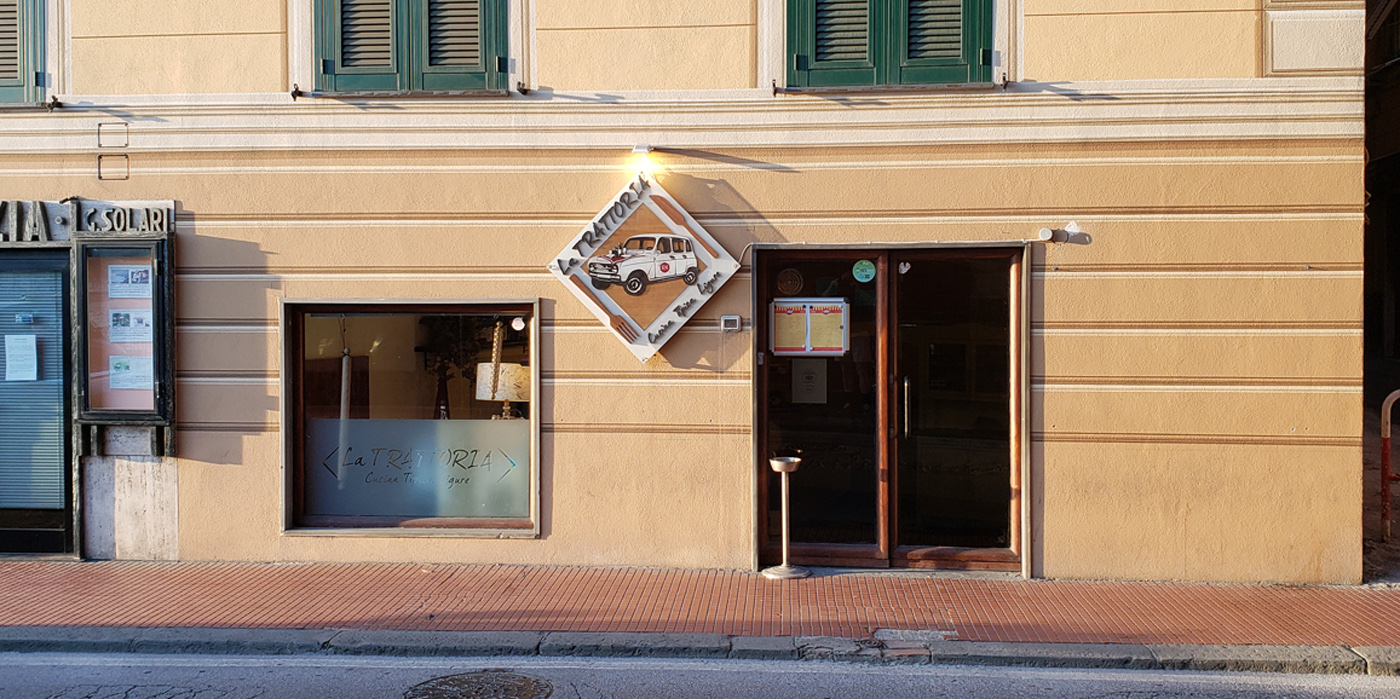
La Trattoria has an amazing menu and the chef apparently to back it up. You will find unusual and eclectic Ligurian tastes here, as well as a very good wine and dessert selection.
La Boccia Ristorante
An enoteca (wine bar) and restaurant, La Boccia Tuscany Wine & Food provides ample sustinence with an amazing wine list. Located on via Venezia, you can select any wine for under 25€, have the bottle uncorked and taste the wine, while only paying by the glass. The fare, as I have already suggested is rather ordinary, but the wines and aperitivi are first rate. We stopped here for lunch and enjoyed every tasty minute.
Of course we ate at other places, but none of those felt as exceptional as the ones above. If you are ever in Rapallo, we hope you will take the opportunity to visit one. Until then, ciao for now..!
Rapallo – Tiny, But Rich In History
Part One
The tiny seaside city of Rapallo is remarkable in many ways, as a port, as a main stop on the Pisa to Genova train line, as a city that has many ancient Roman, Etruscan and other historical features, and as a tourist point of interest; where one can just relax and enjoy the sun while eating great Ligurian food.
We began our stay checking into the four star Hotel Astoria Rapallo along via Antonio Gramsci. Built in 1903 in the Victorian Liberty Villa style, it is well taken care of by its current owner and management couple, who cheerfully greeted us as we entered. The views from our seaside room were what we imagined, as were the cooling breezes that ran through the room when we open all the windows, clean and refreshing. Even though they come equipped with air-conditioning, it is always nice to open the windows to get fresh air, especially in the early morning.
Rapallo is an active port for fishing, leisure and travel (via ferry or other means to destinations along the coast.) Unfortunately, while we were here, the ferries were still not running, due to the restrictions in place on account of the virus. So, we were not able to visit Portofino as we had hoped.
The Historic Center
As with all older cities of any size, Rapallo has a historic center, albeit small, which one can wander through to shop or to catch a meal.
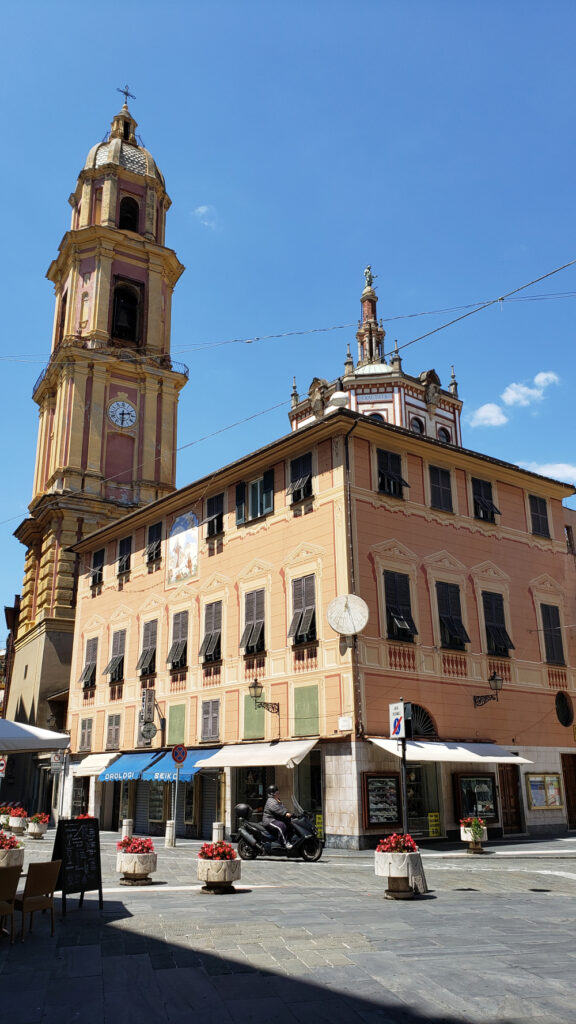
Some of the main attractions here include the church, or Basilica of the Saints Gervasius and Protasius.
The Porta della Saline
The only remaining gate of the ancient city walls is the Port of Salt, or Porta della Saline.
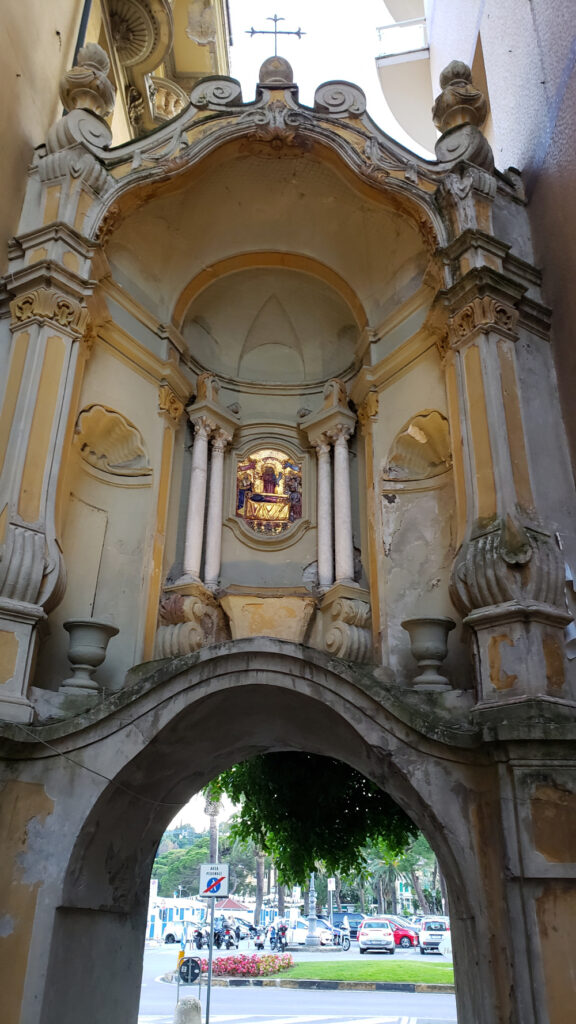
There are of course plenty of narrow and inviting streets in the old town that suck you in with their capillory action.
Hannibals Bridge
Built in the second century, the ancient bridge from the Roman period, called Hannibals Bridge, can still be seen and enjoyed. Though cordoned off to travel, it still is an imposing and impressive sign of the Roman’s architectural and construction abilities.
The Castle Of Rapallo
Anyone looking out into the gulf will sooner or later notice the small castle sitting off the coast directly in front of the traffic circle (or roundabout), Piazza Giovanni Battista Pastene. This is the Castello di Rapallo, an old castle built in the 1550s in response to attacks by Turkish pirates. It is still in fairly good shape, but while we where there, temporarily closed due to Covid restrictions and construction in the vicinity.
The Brotherhood Of White
A Brotherhood of White, also known as the Great White Brotherhood and the Universal White Brotherhood, has a sect or presence in the city. In a part of the historic center, a structure exists that apparently houses this old eighteenth century order of people of enlightenment. The signs are there, if you are looking for them.
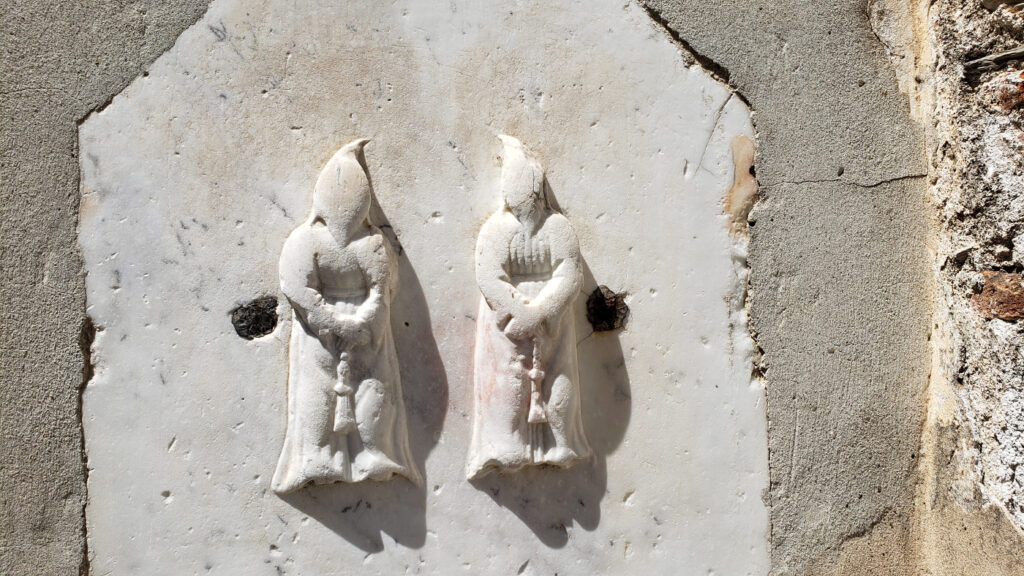
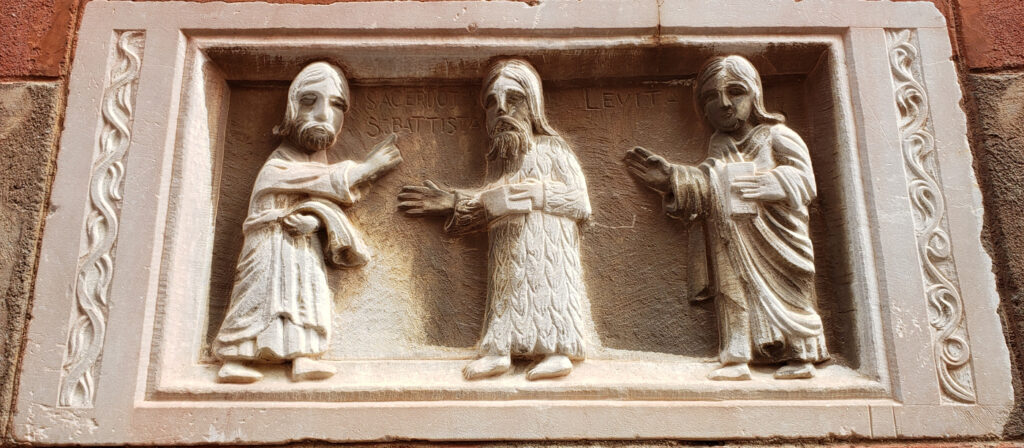
The Gulf Of Tigullio
The Gulf of Tigullio is very large and extends from Portofino to Zoagli. It is always nice to walk along the Port of Rapallo in the early morning or in the evenings to enjoy the fresh air and beauty of the gulf itself. There are many inlets, bays and coves that one can explore along the way, some with road access, others a bit more difficult.

Rapallo To Montallegro
The cable car from Rapallo to Montallegro and back is a treat. Though some might consider it an expensive treat, at 8€ a piece for a round trip; we thought it a fair deal. The views in and of themselves are more than worth the ticket price. There is not only a basilica waiting for you at the top, but also a restaurant with amazing views of the city and surrounding countryside.
Sanctuary Of Our Lady Of Montallegro
The sanctuary at the top of the hill in Montallegro is actually a basilica. Called the Basilica and Sanctuary of our Lady of Montallegro, it is both impressive and still functioning.
Casa del Pellegrino
There is a cafe, bar and restaurant some ten or so minutes walk from behind the basilica. It is not only the start of one of the hiking trails that wanders through the area, but also provides an excellent view of the gulf and port of Rapallo. Since the cable car runs every thirty minutes or so, we took advantage and spent an hour here, taking on refreshment and admiring the view while enjoying the cool air coming up the mountain slopes.
Cable Car From Montallegro Back To Rapallo
Here are a few videos of our trip back down the mountain. If you are ever there, a word of caution for those with any fear of heights, you will be suspended very high in the air. It may not be for everyone, unless you maintain your look inside the car on ascent and likewise on the return.
